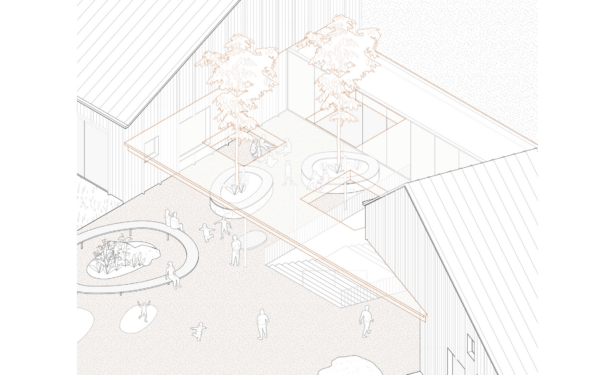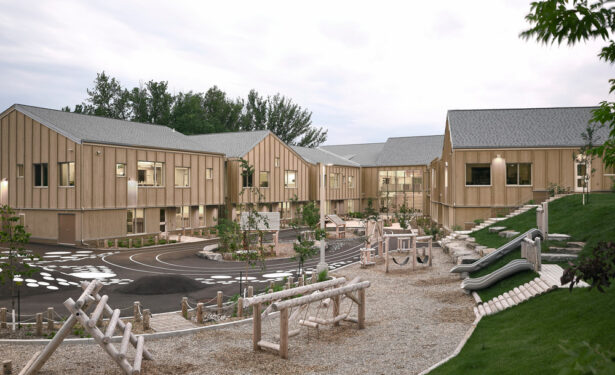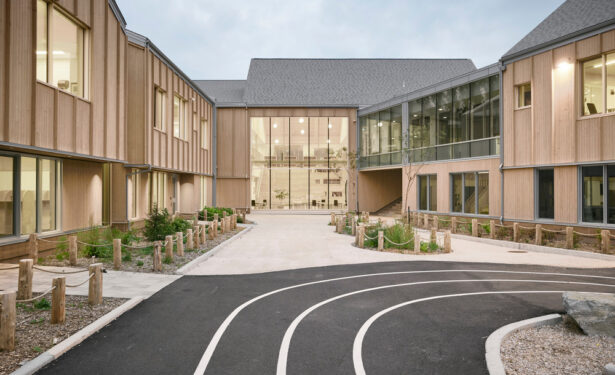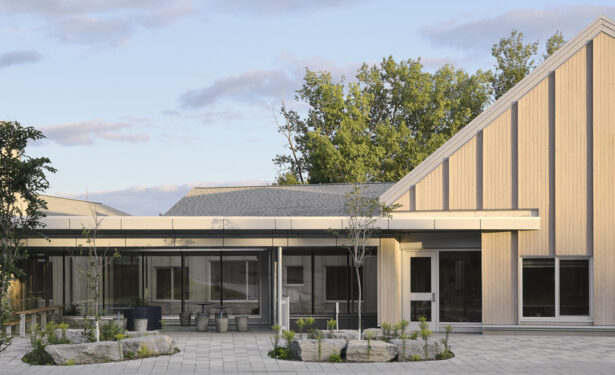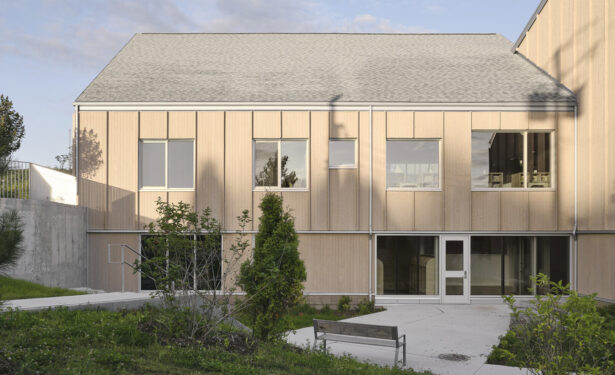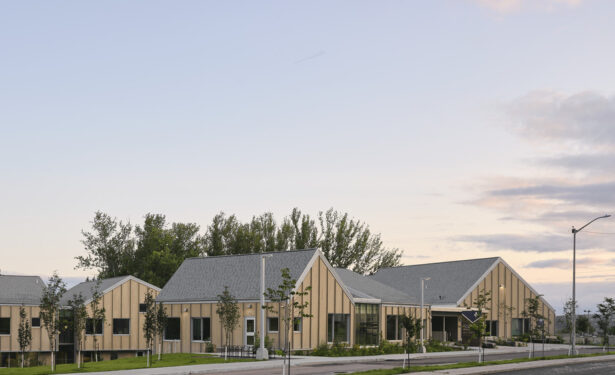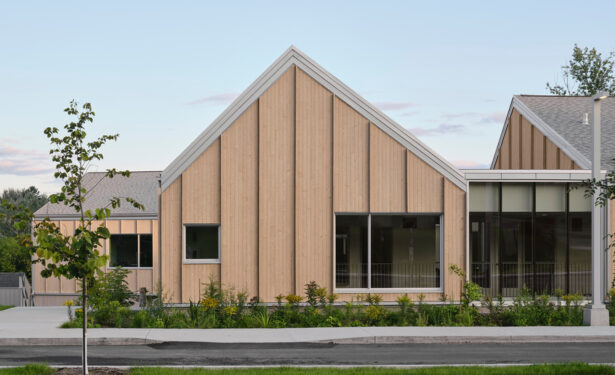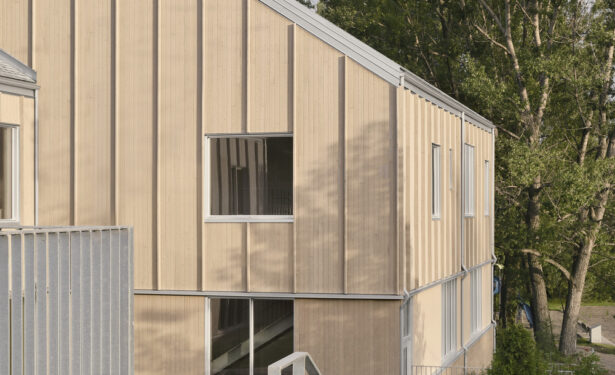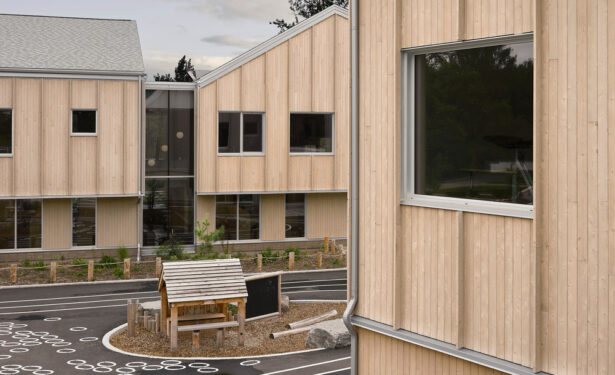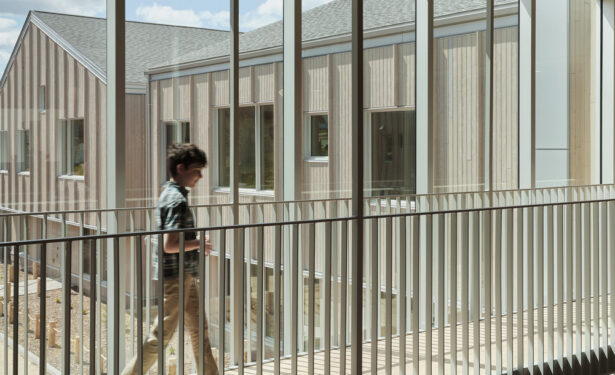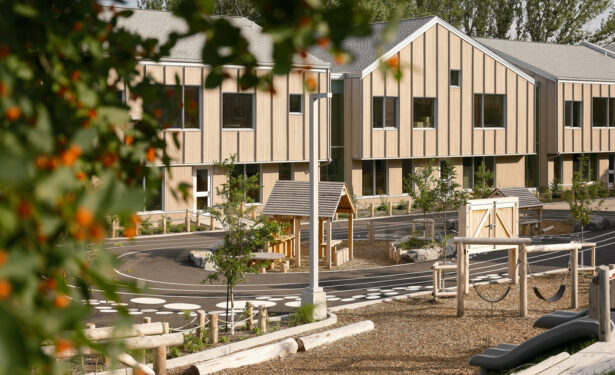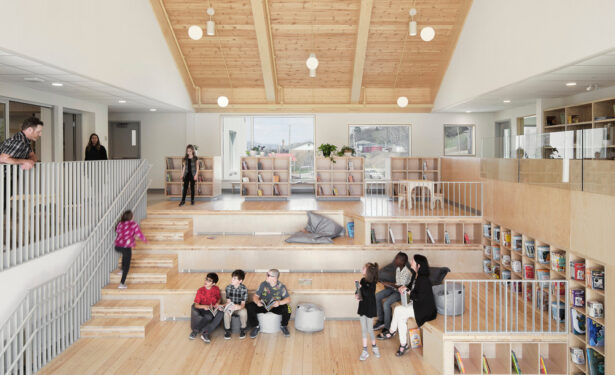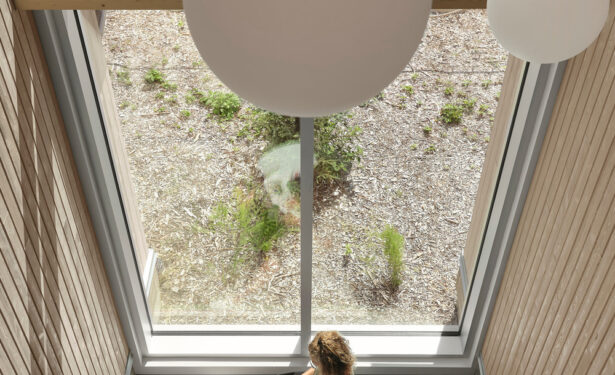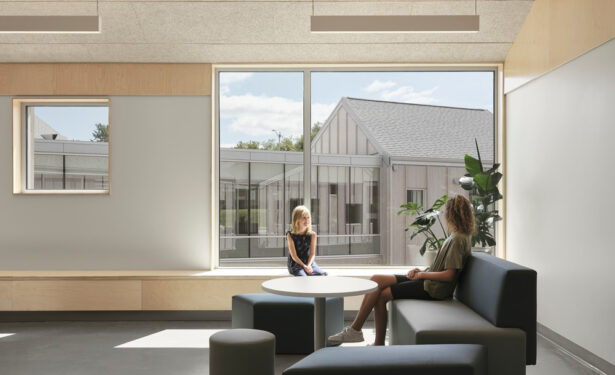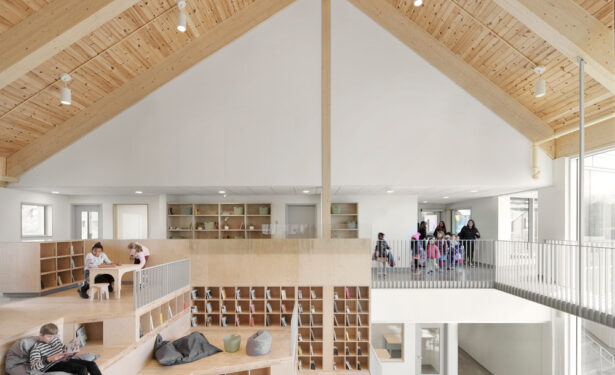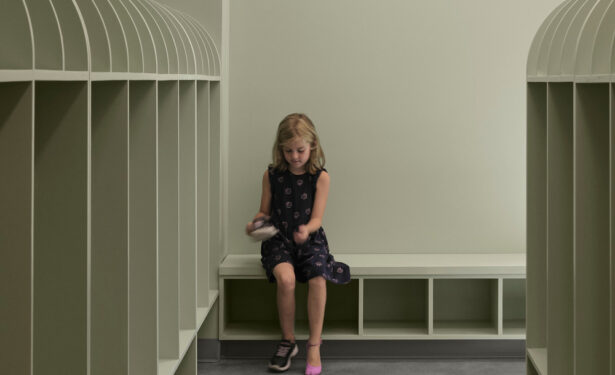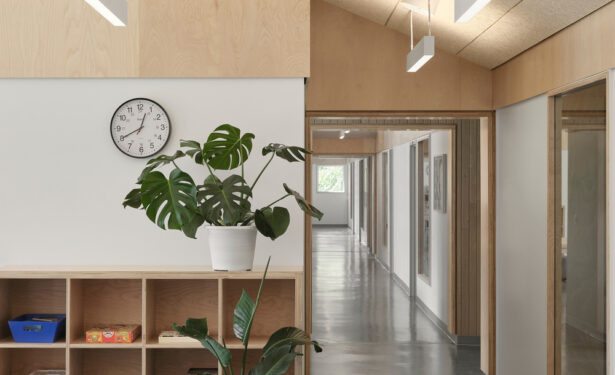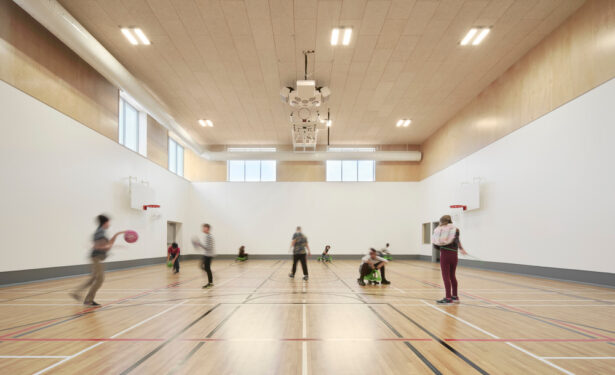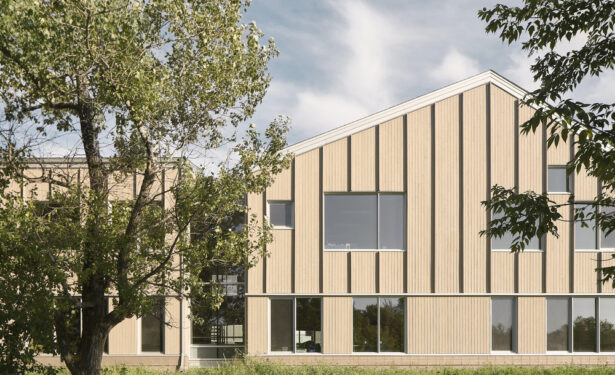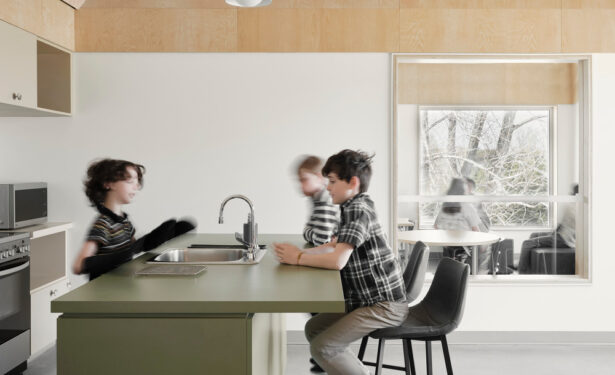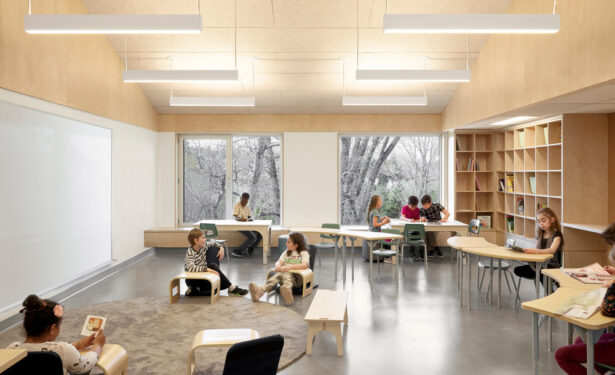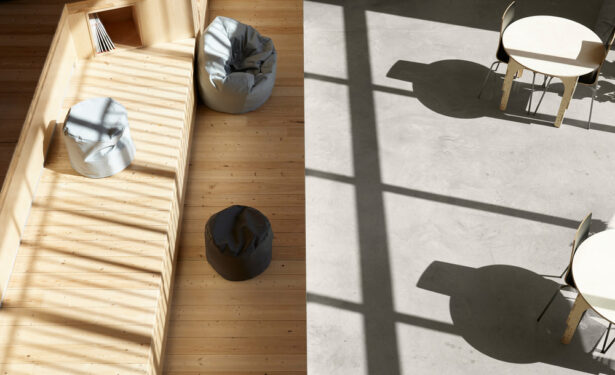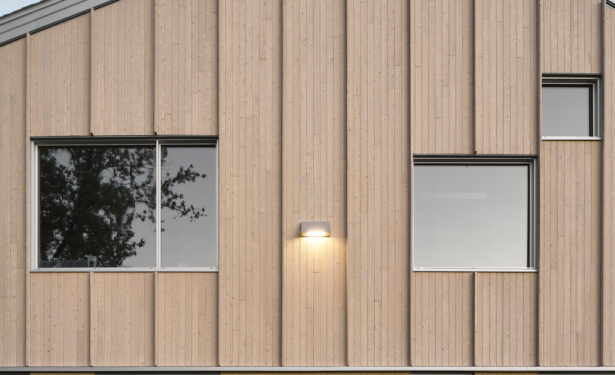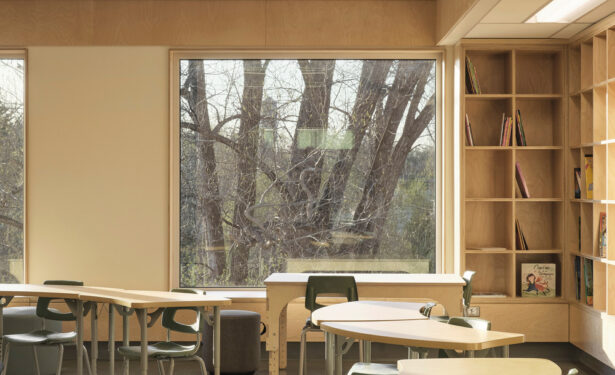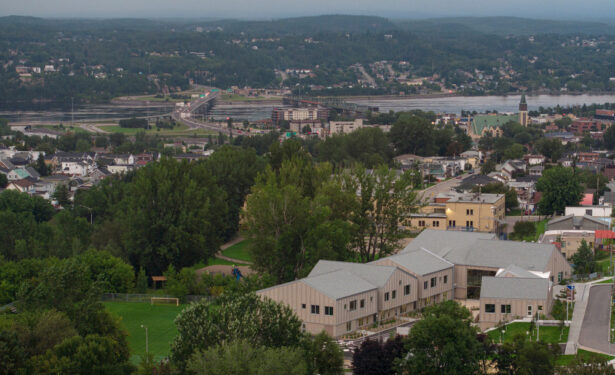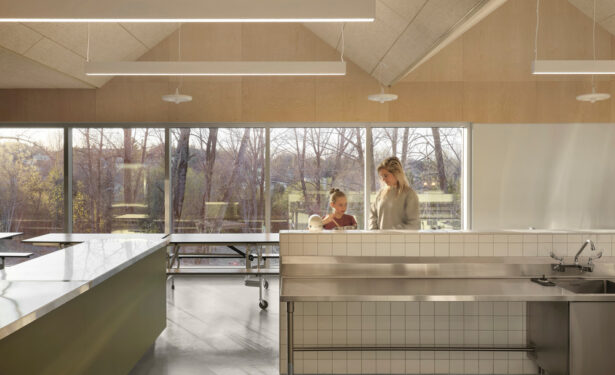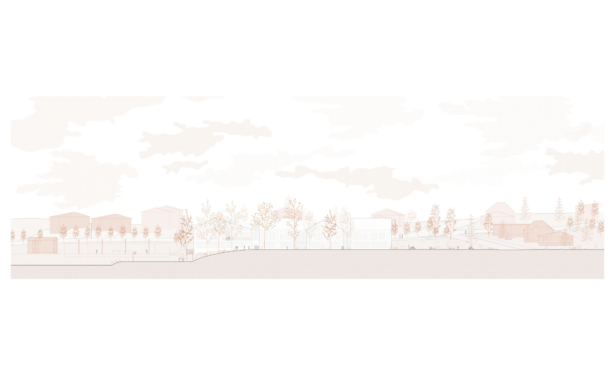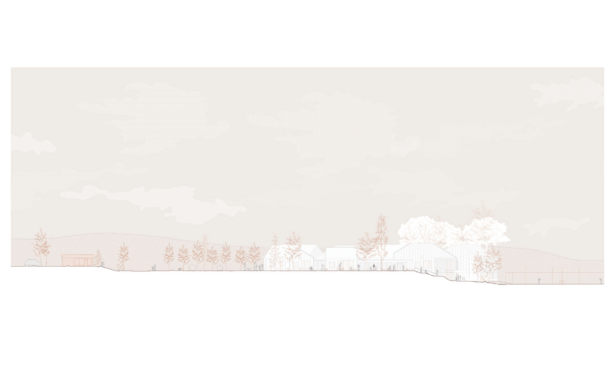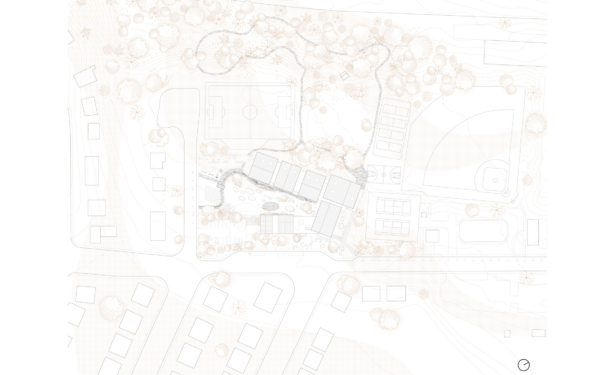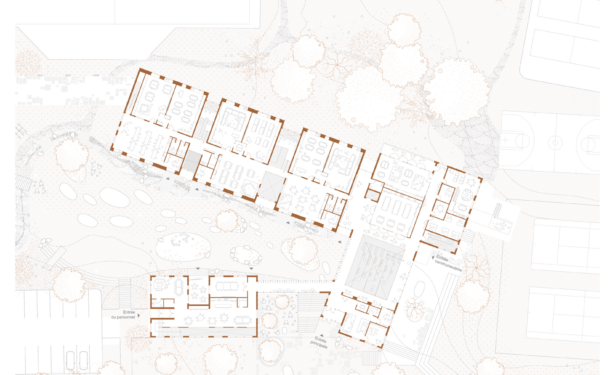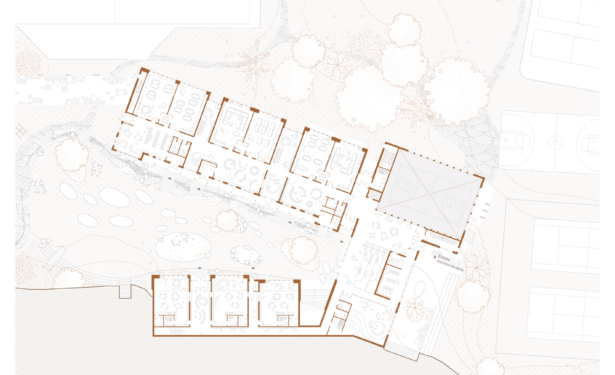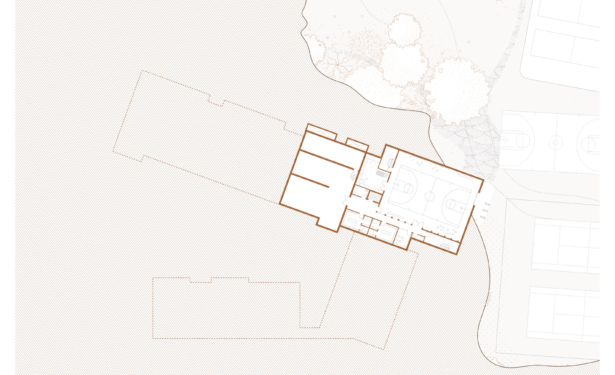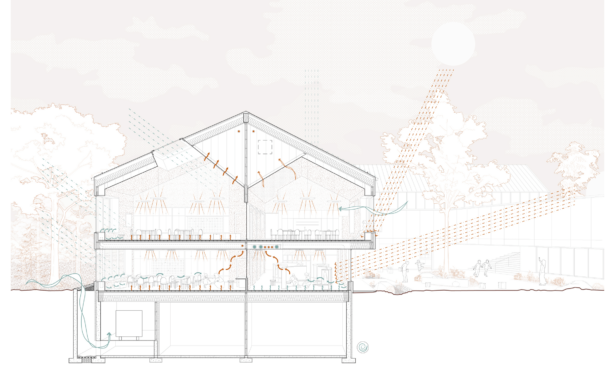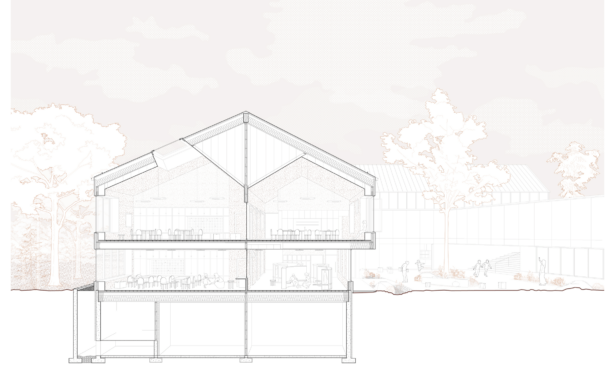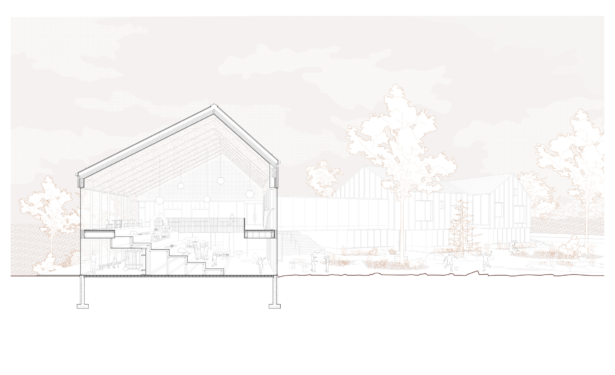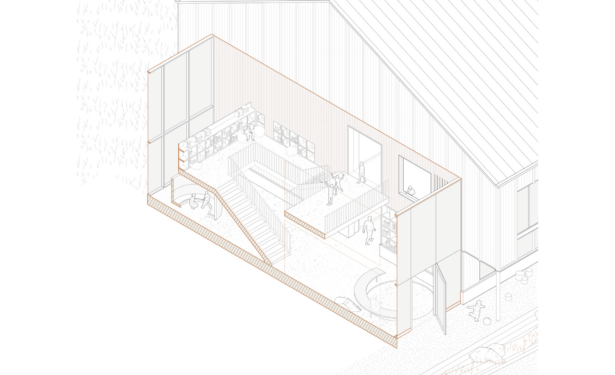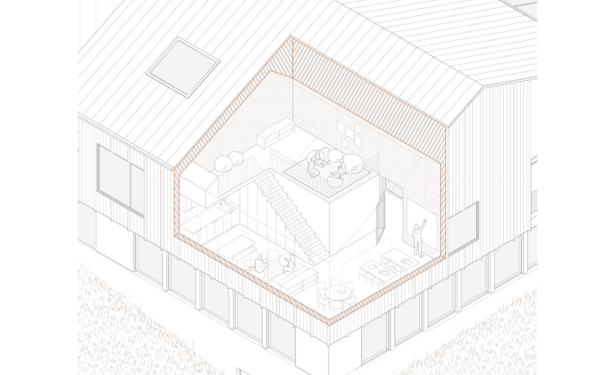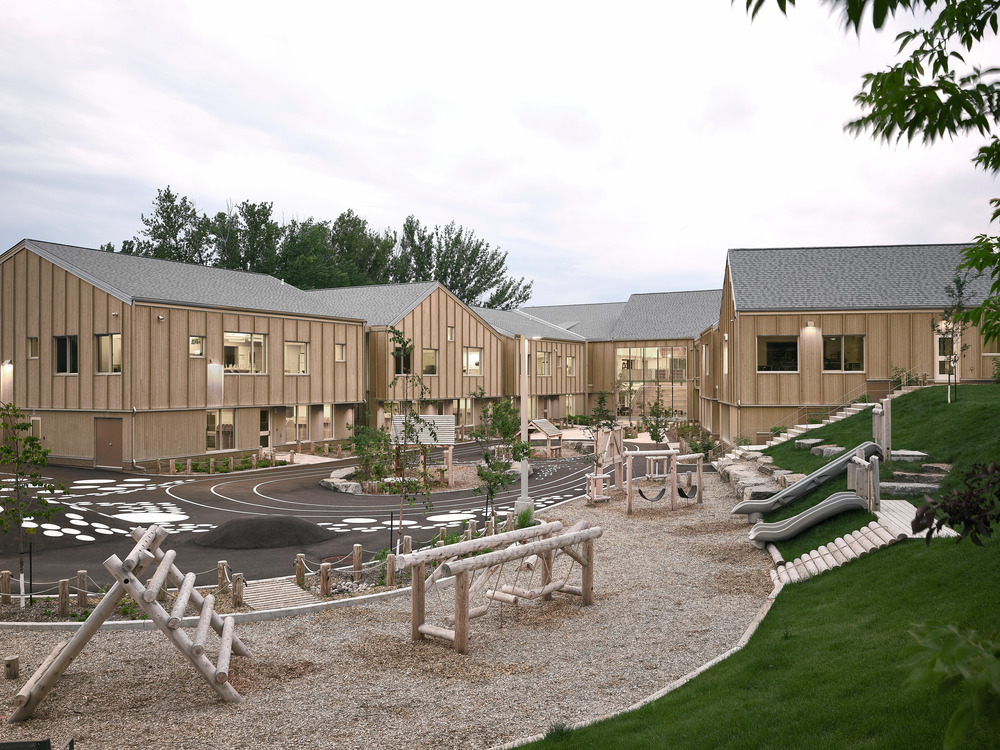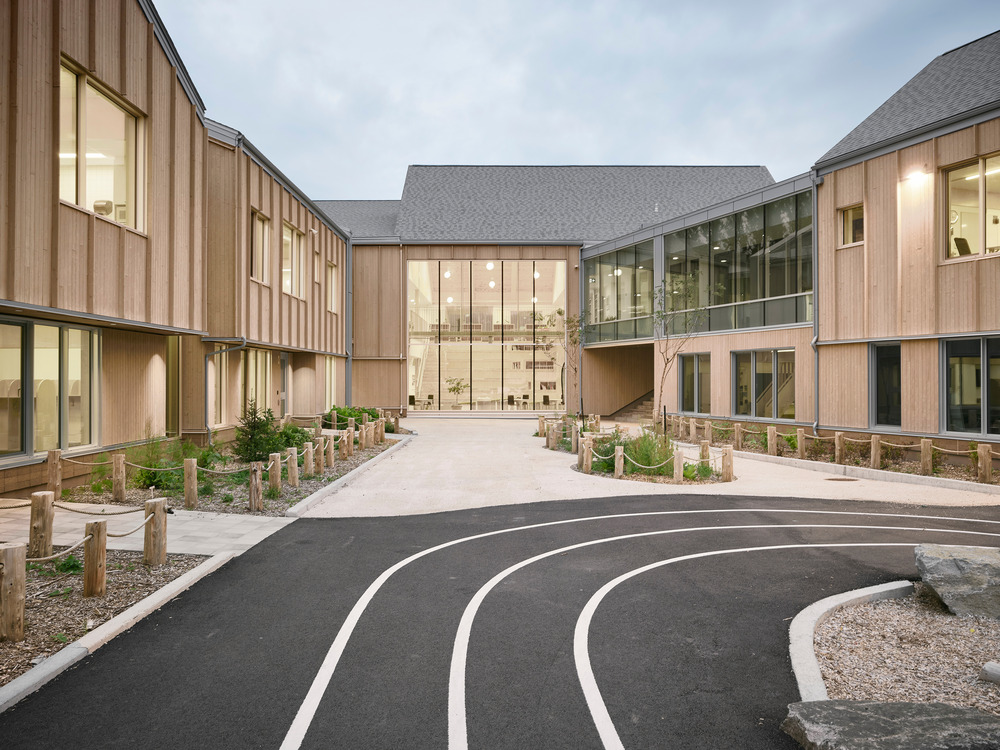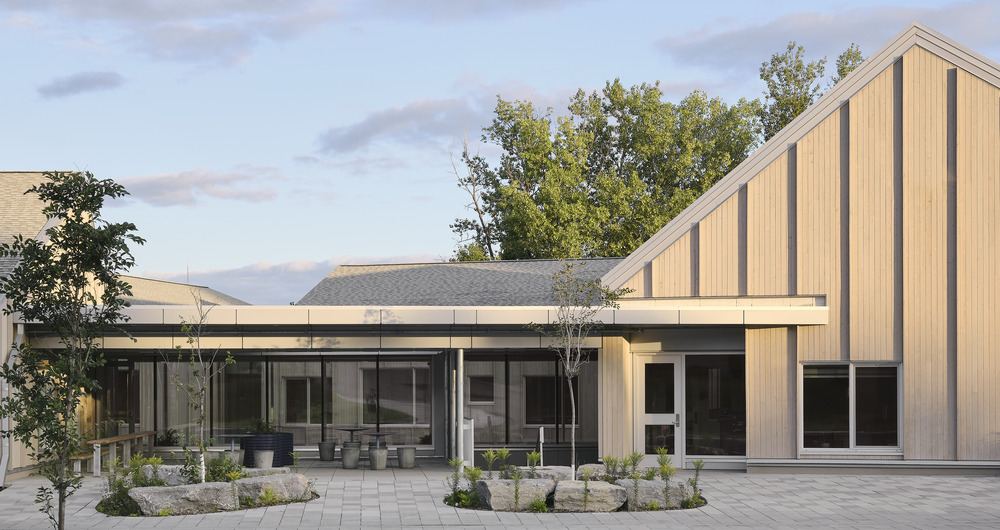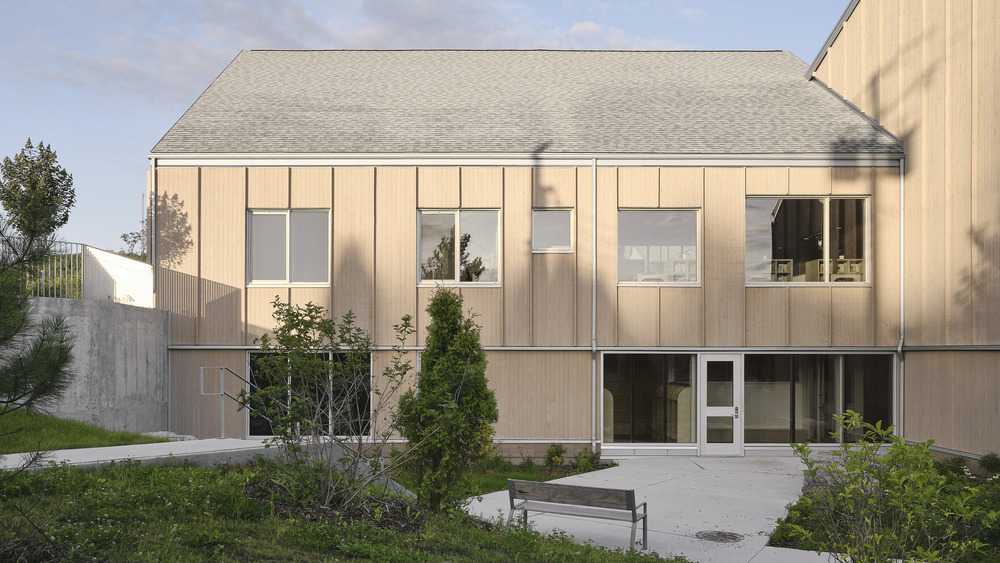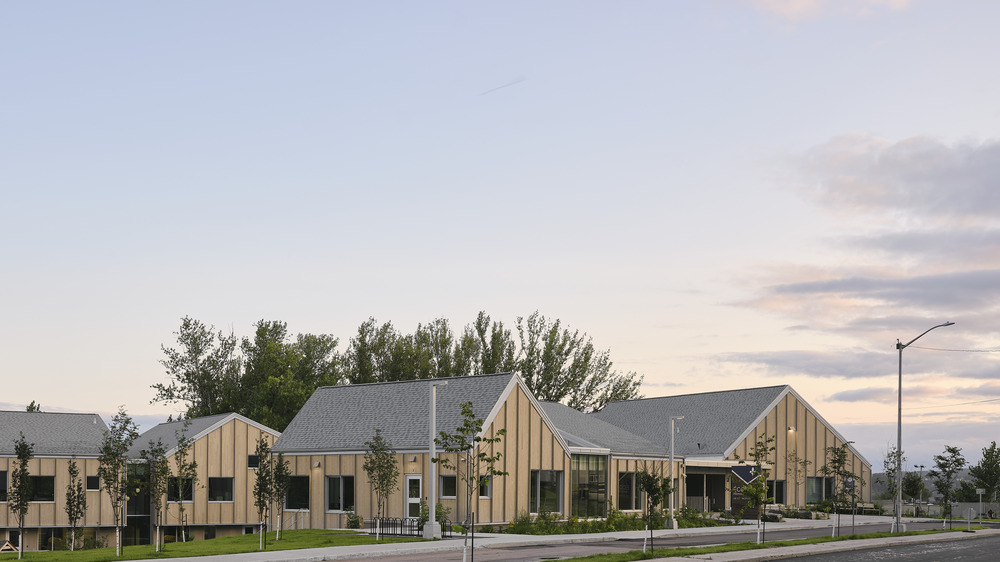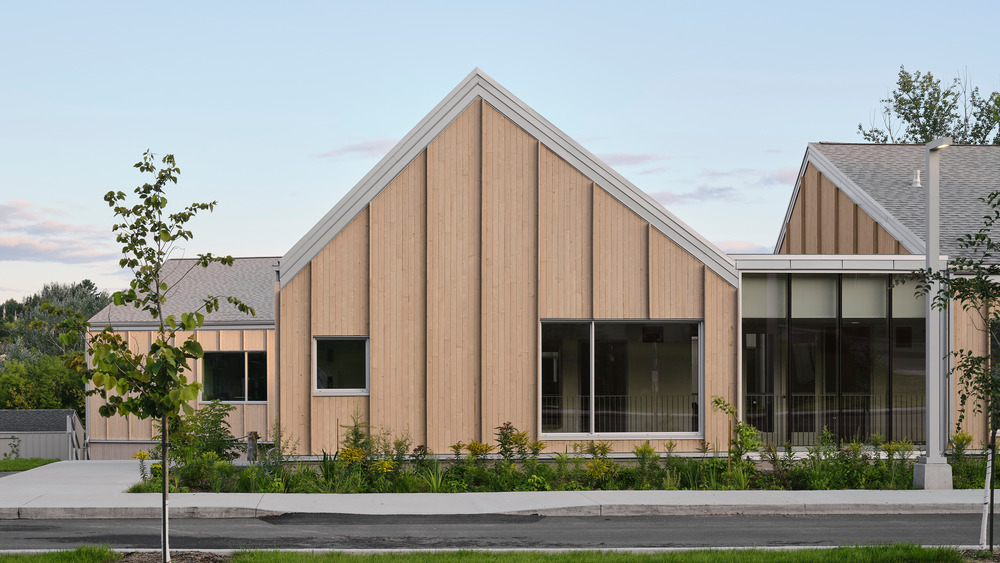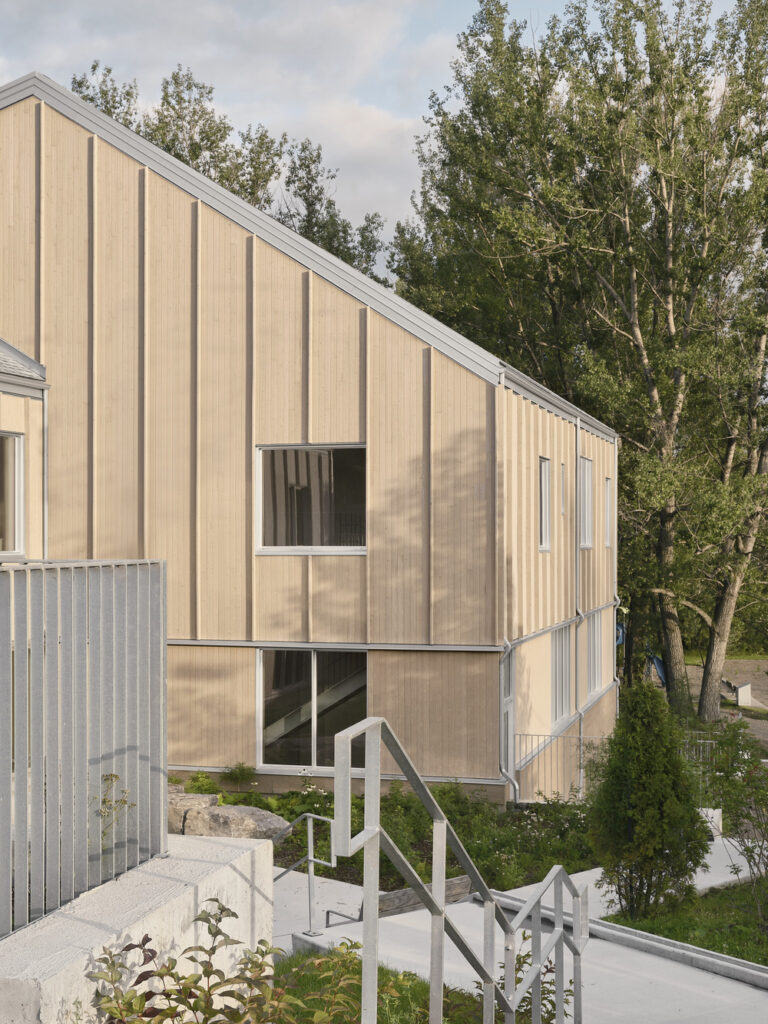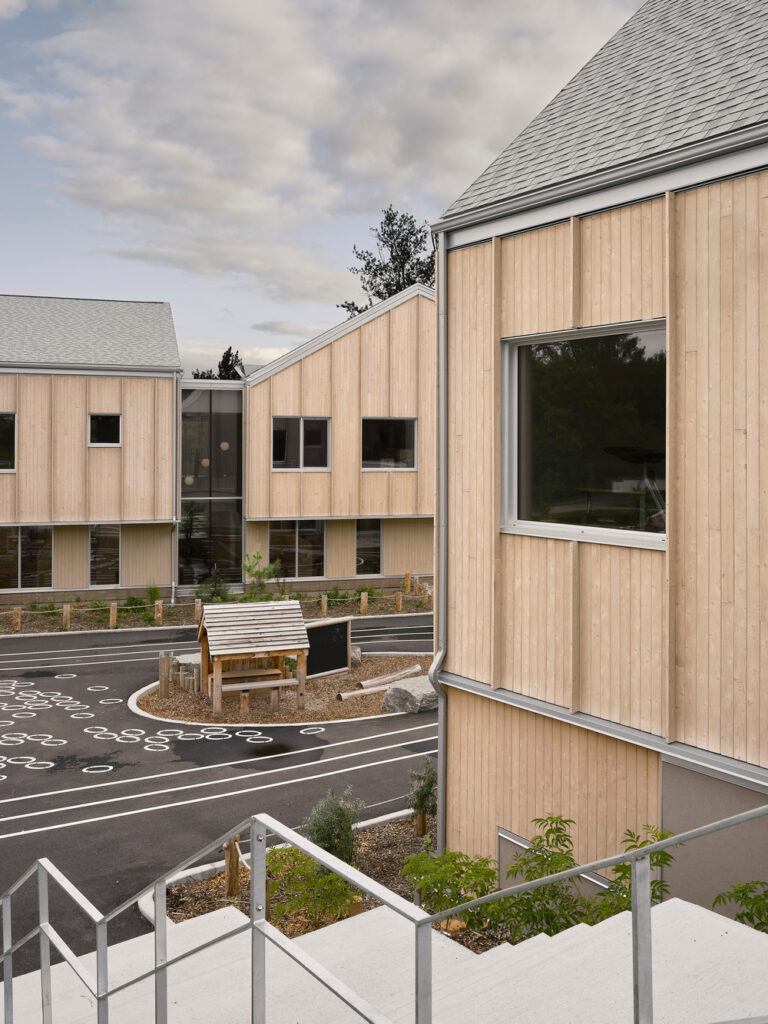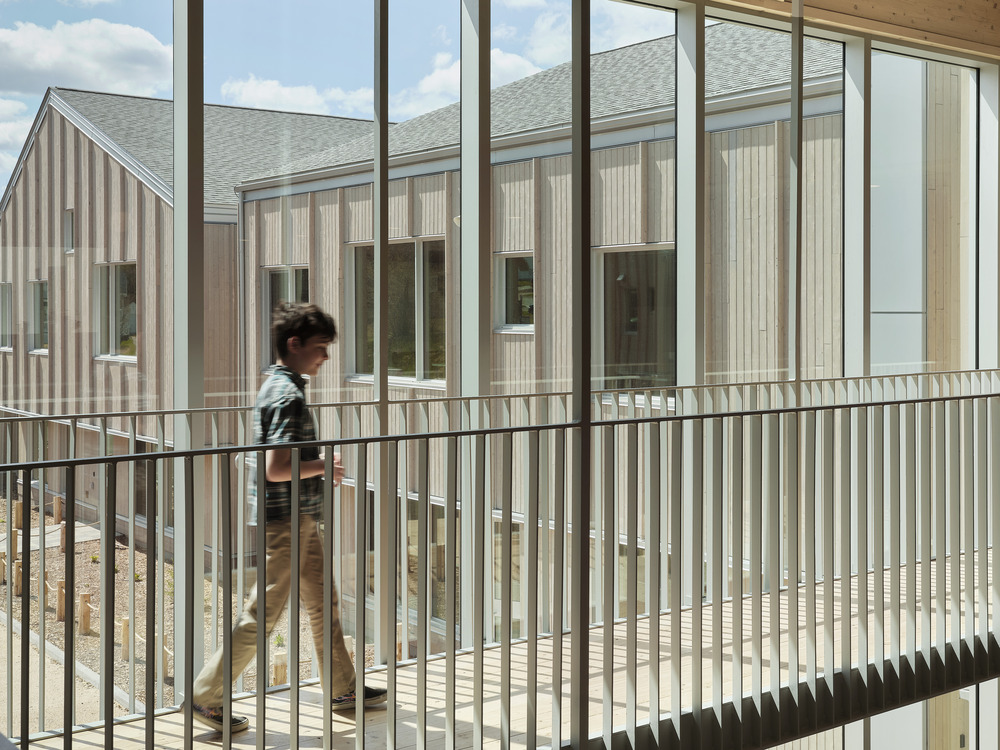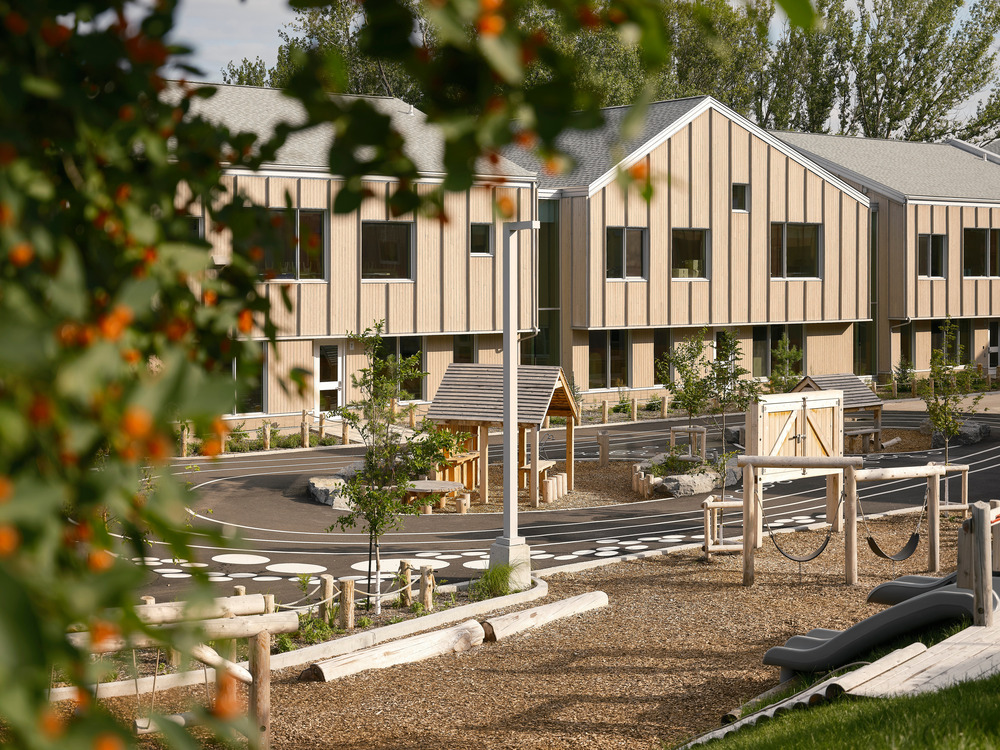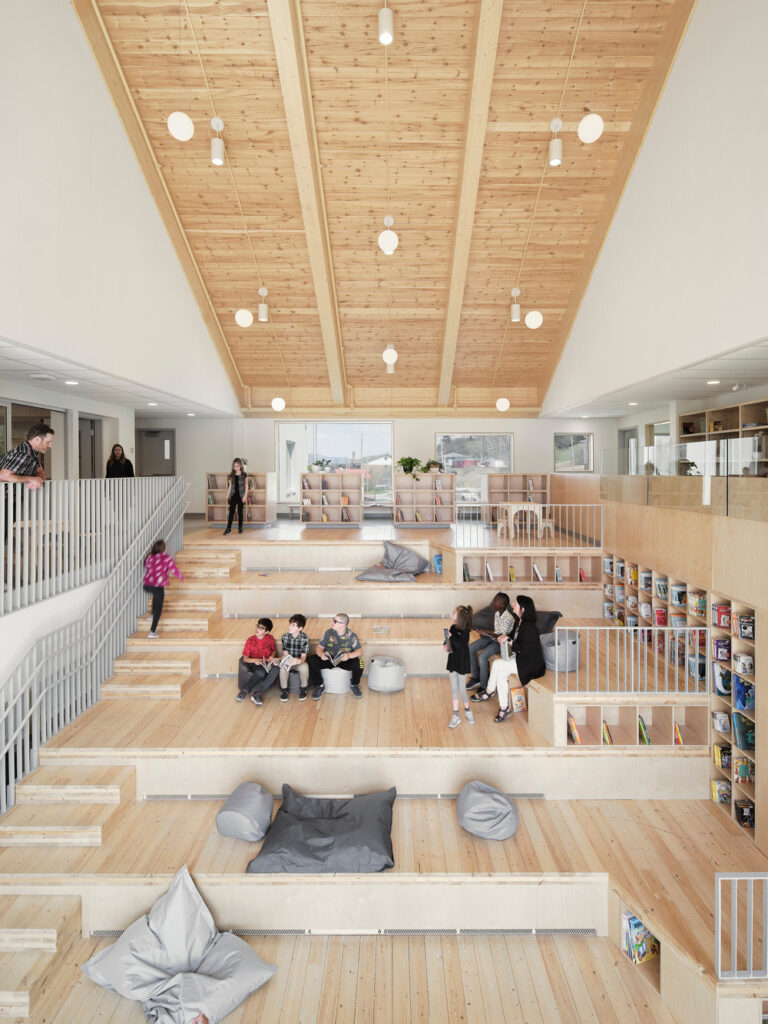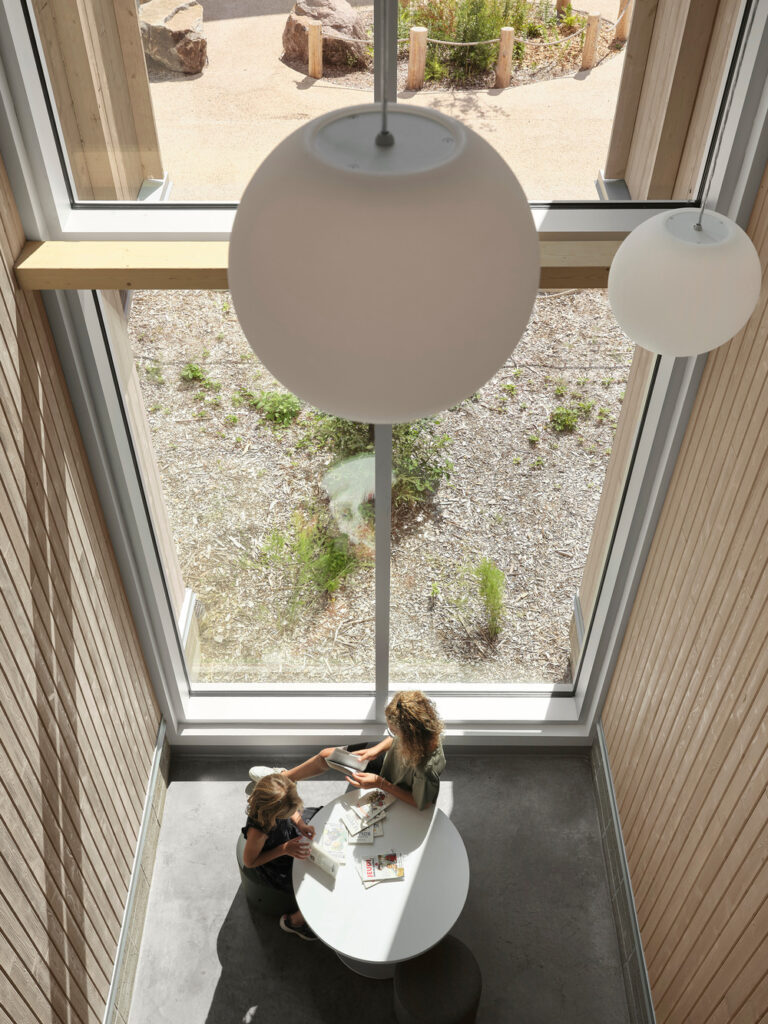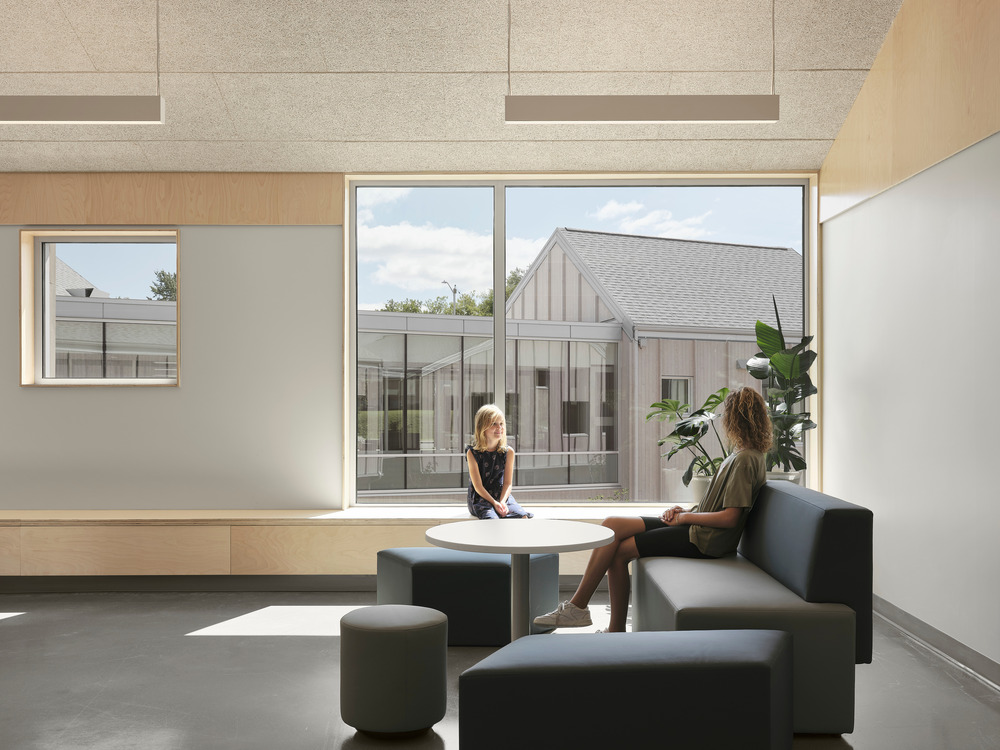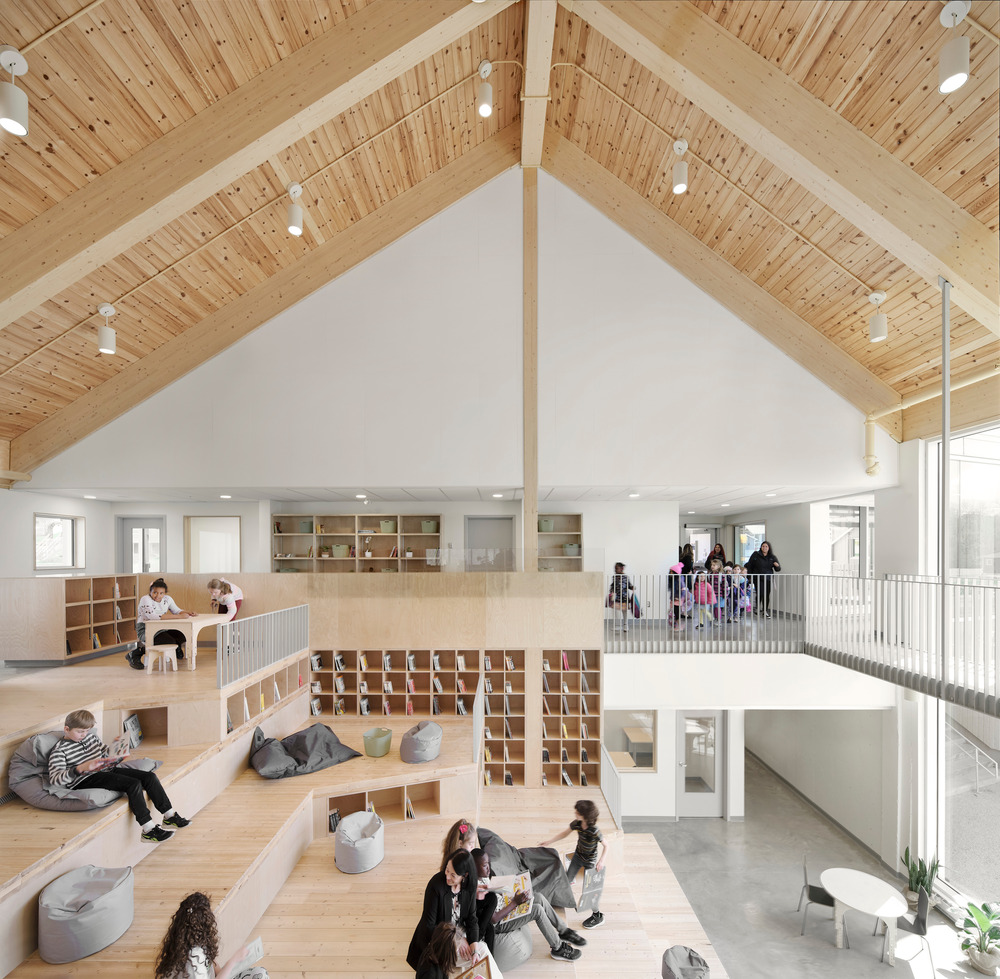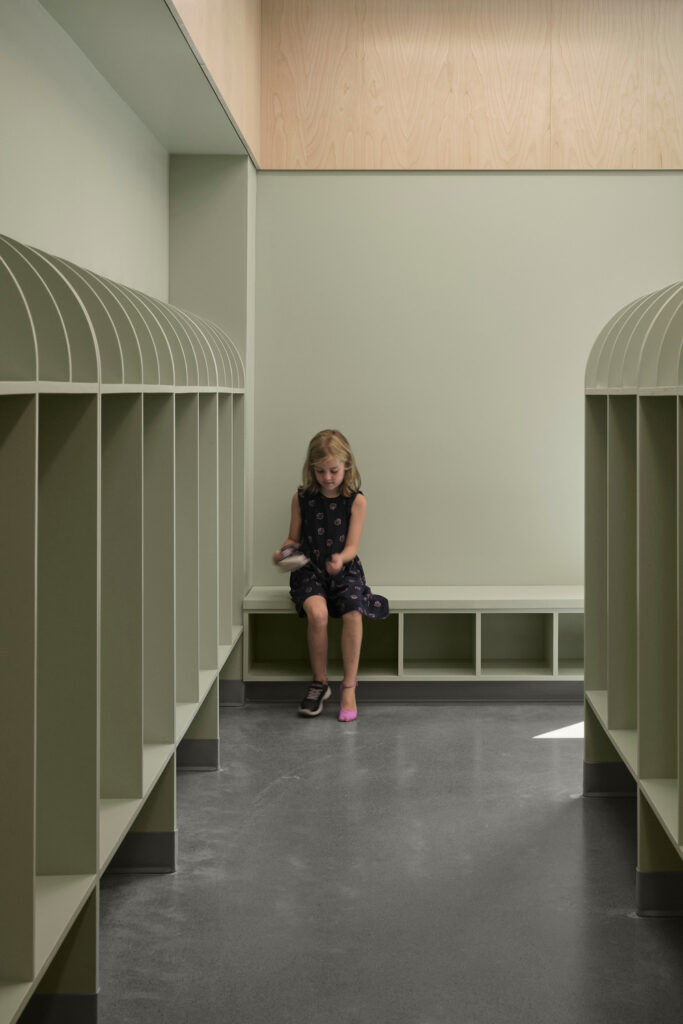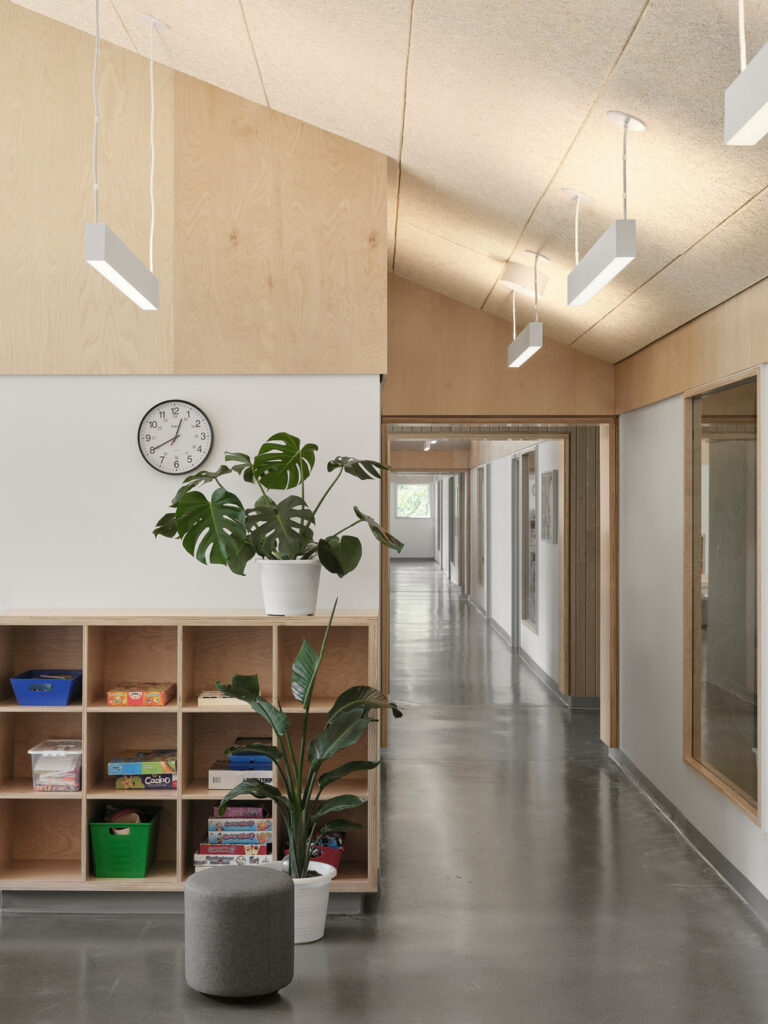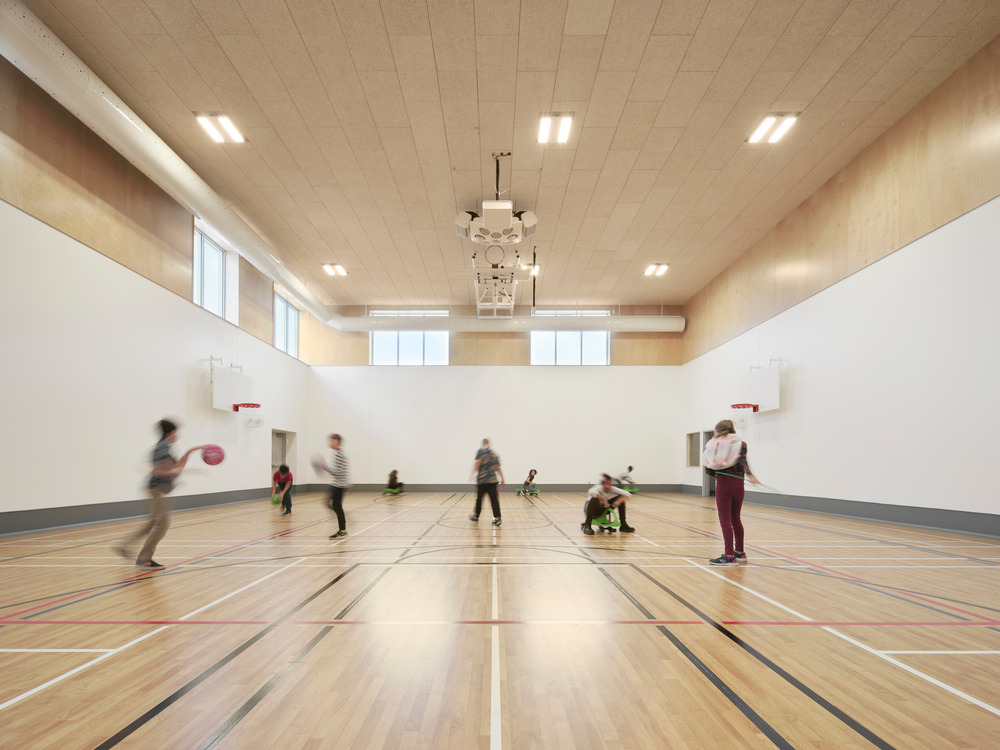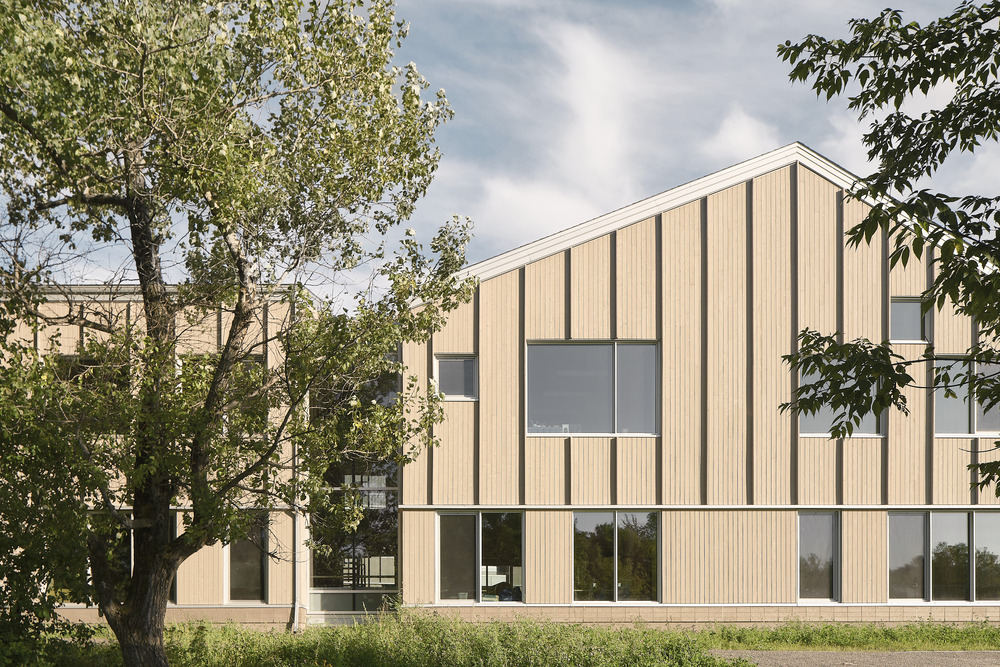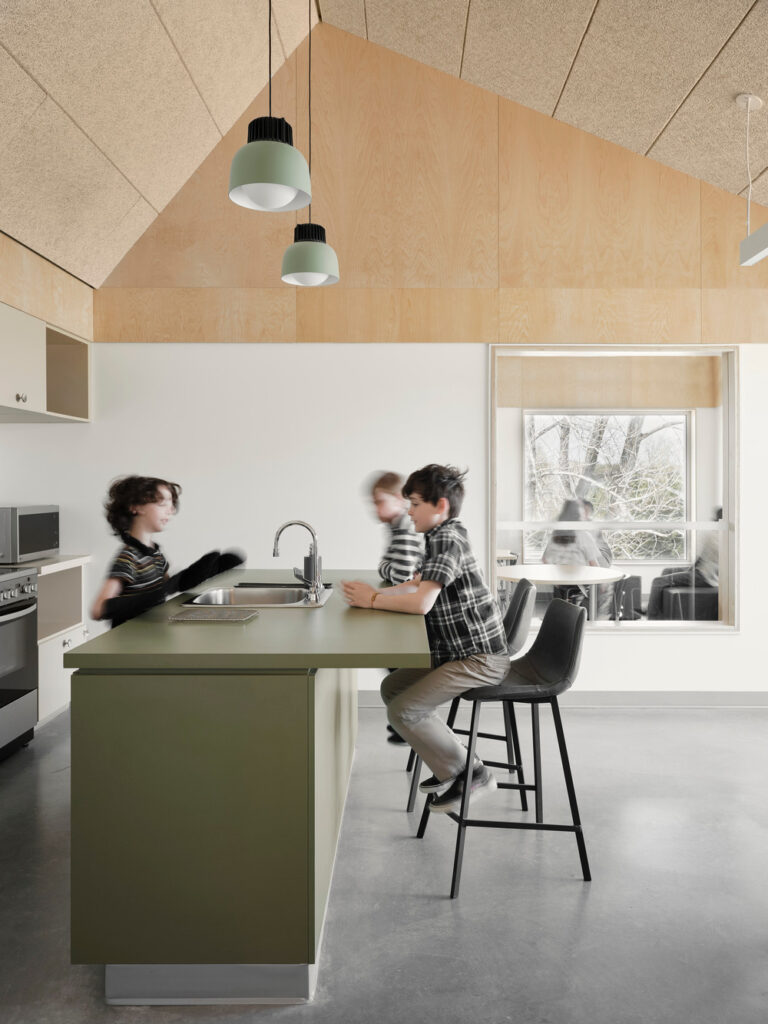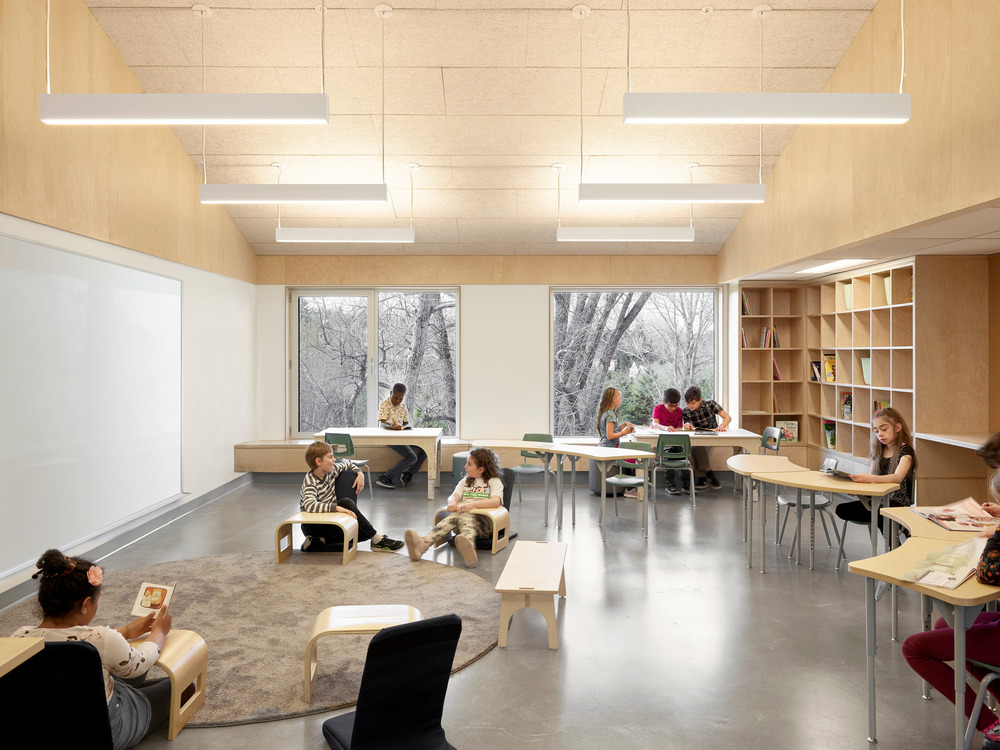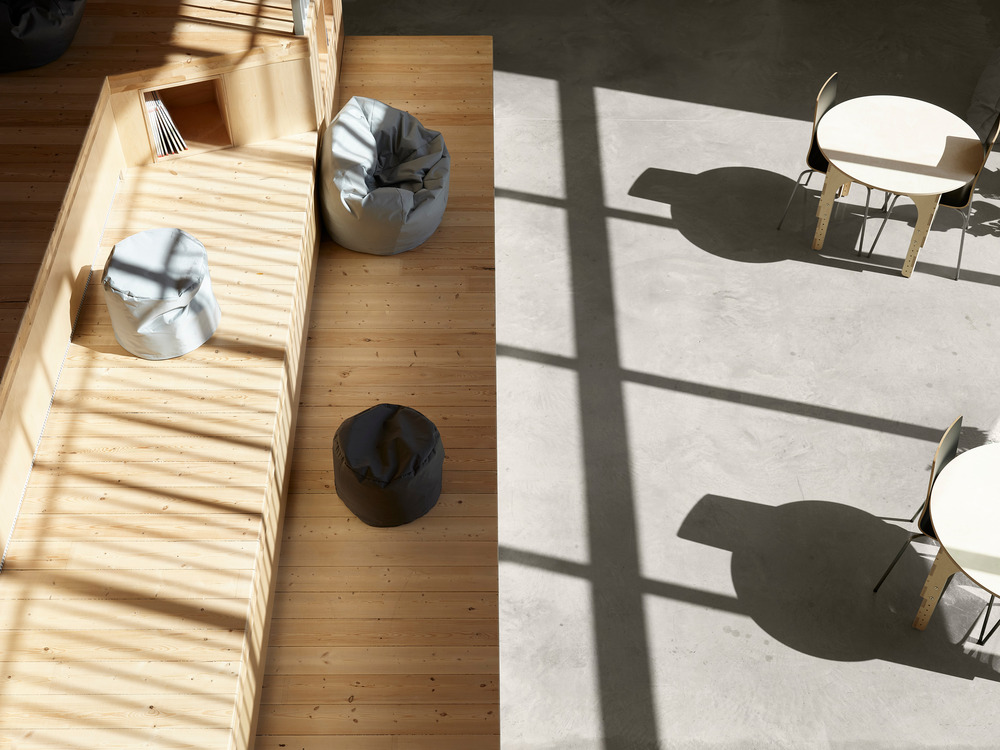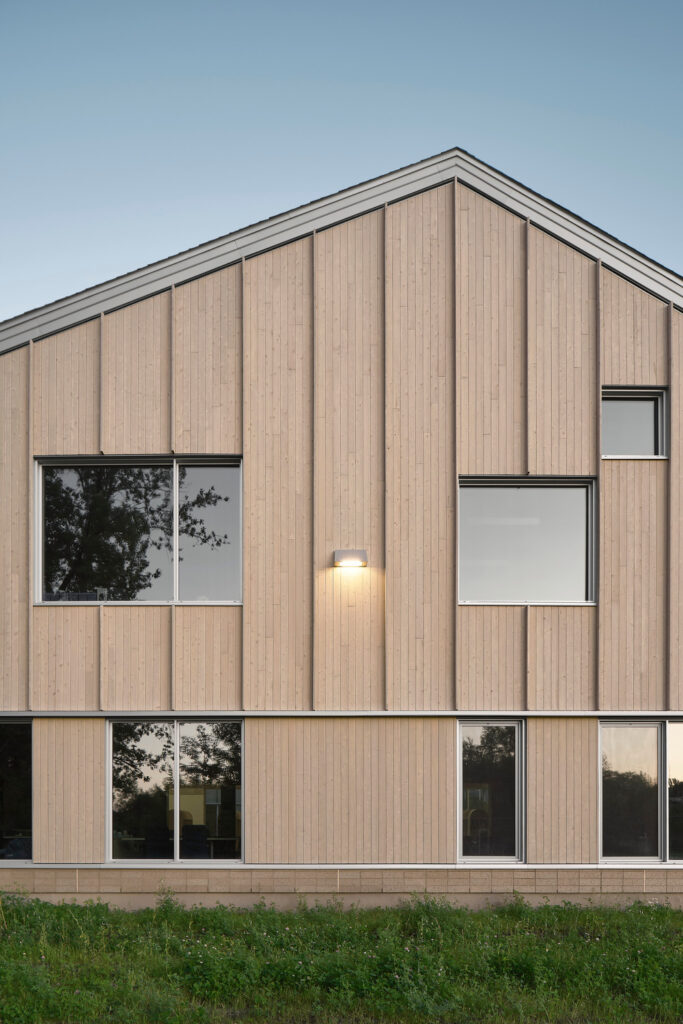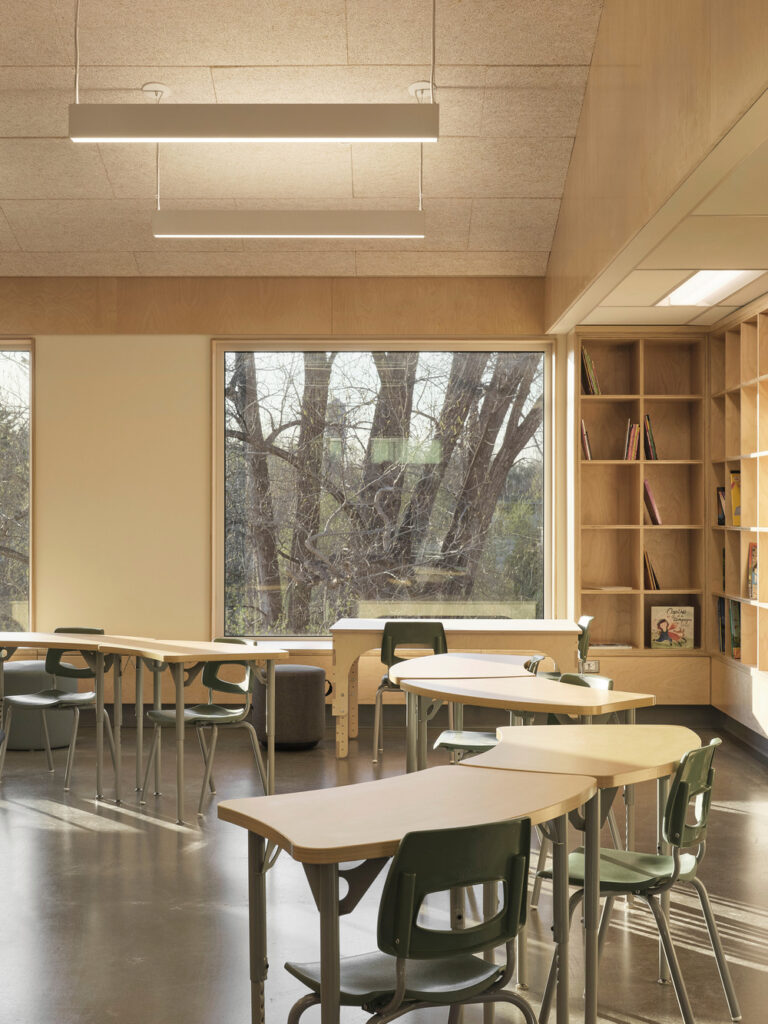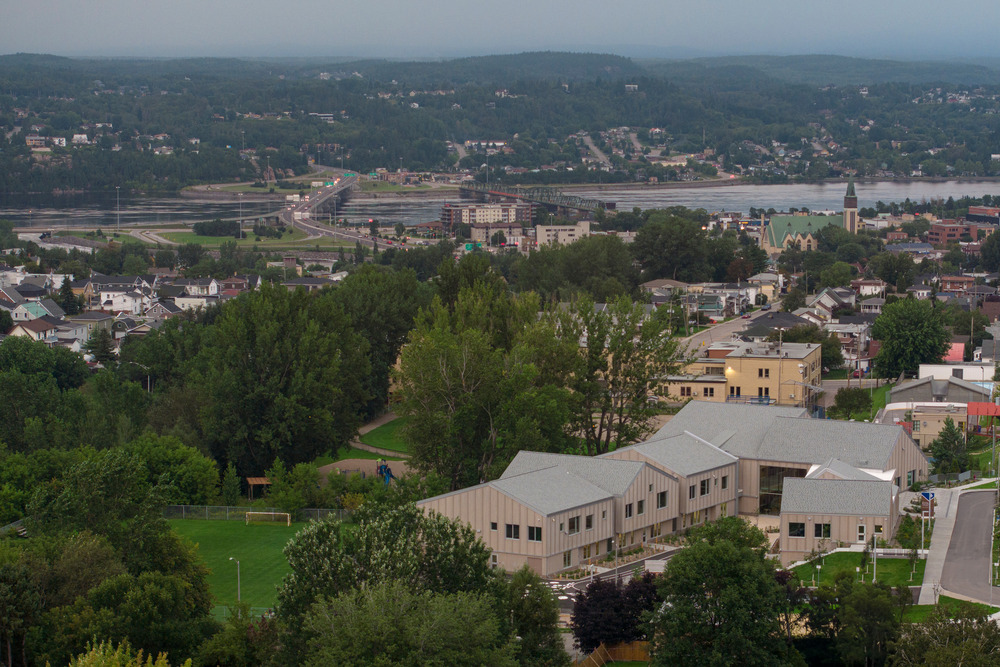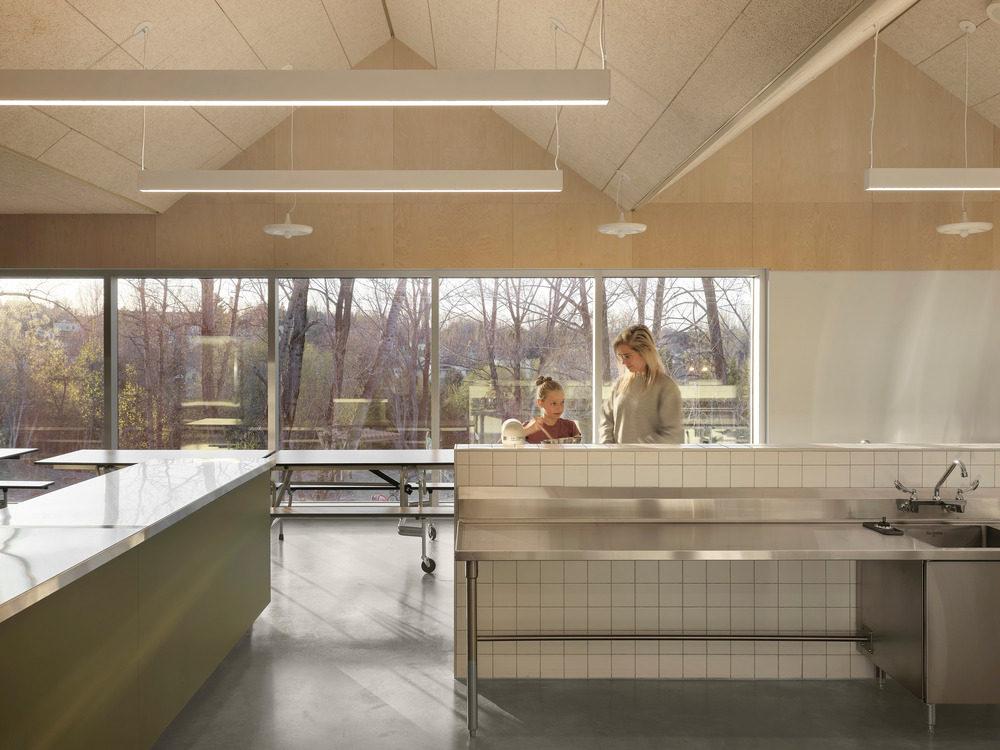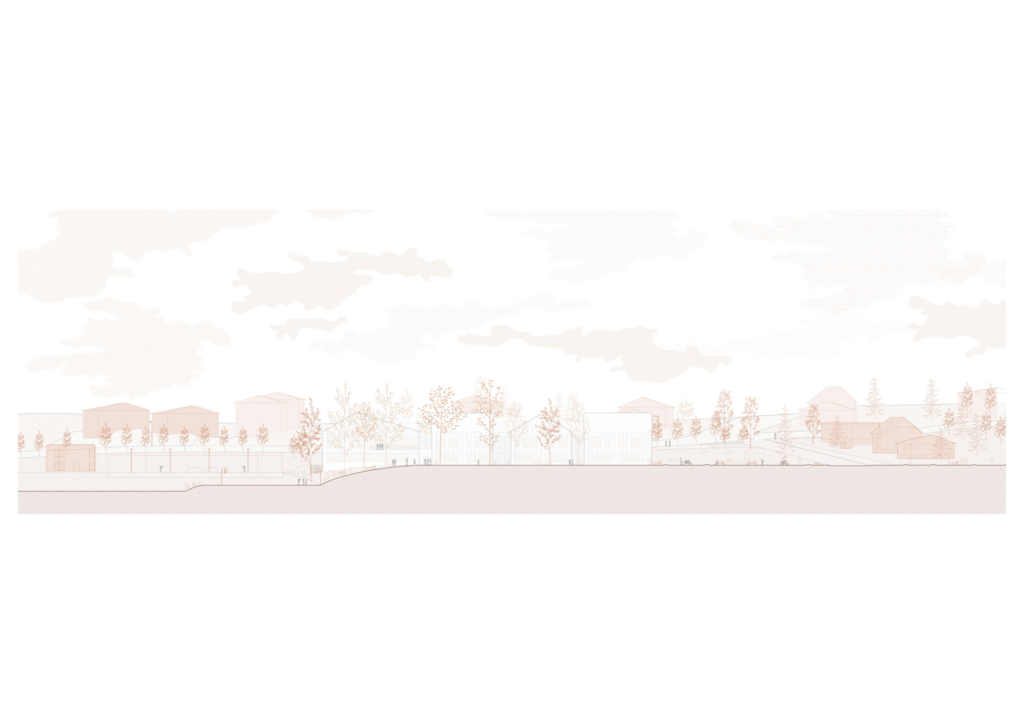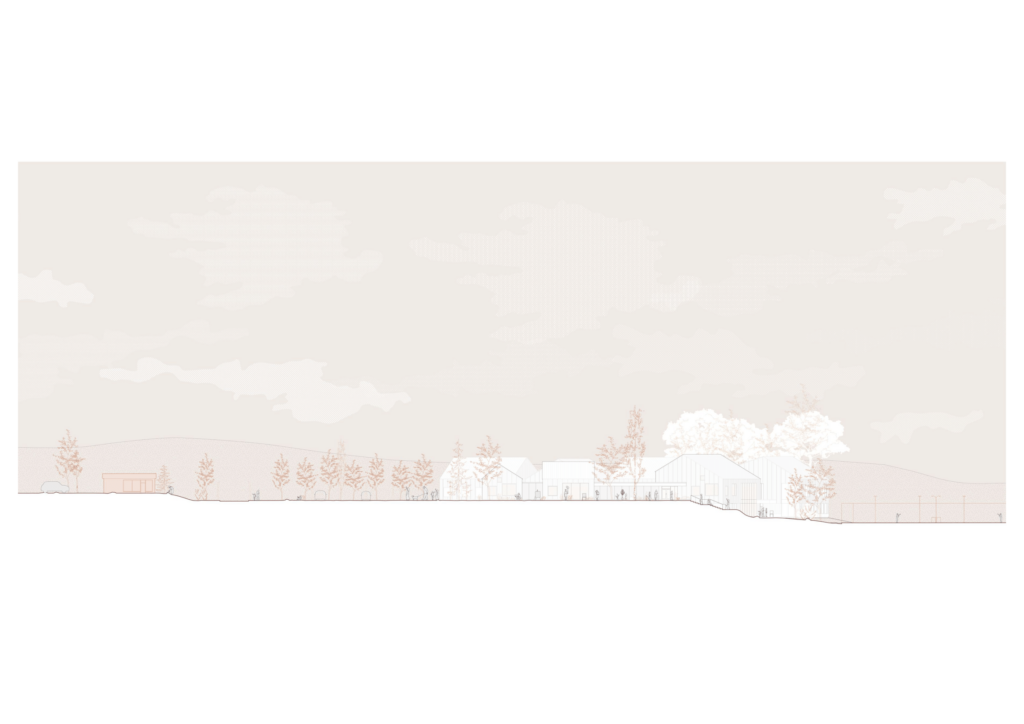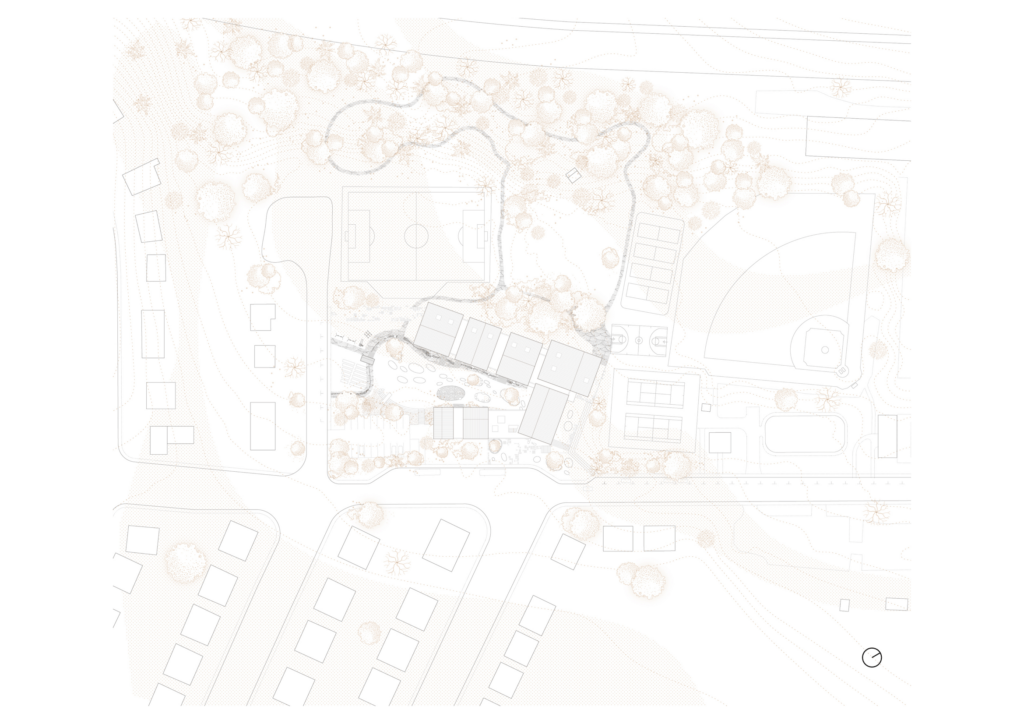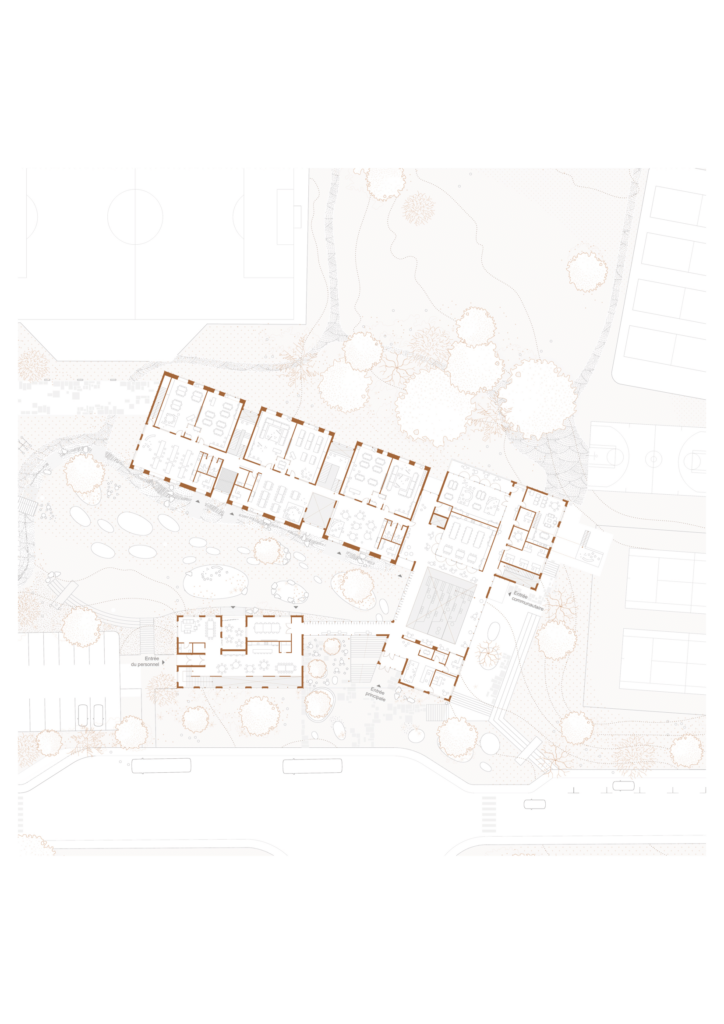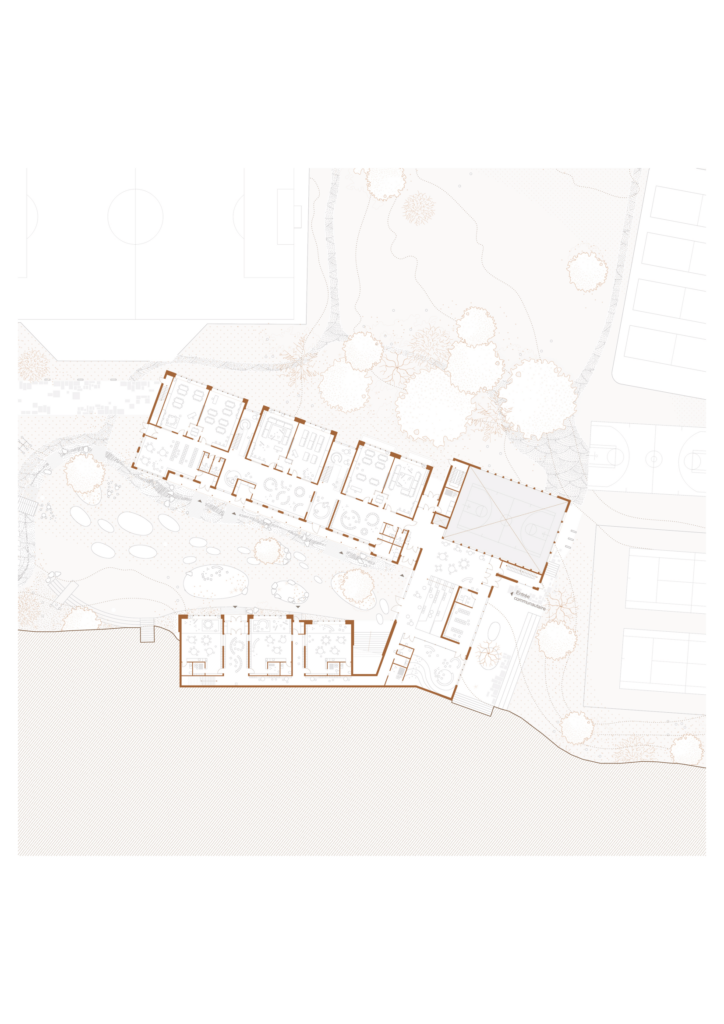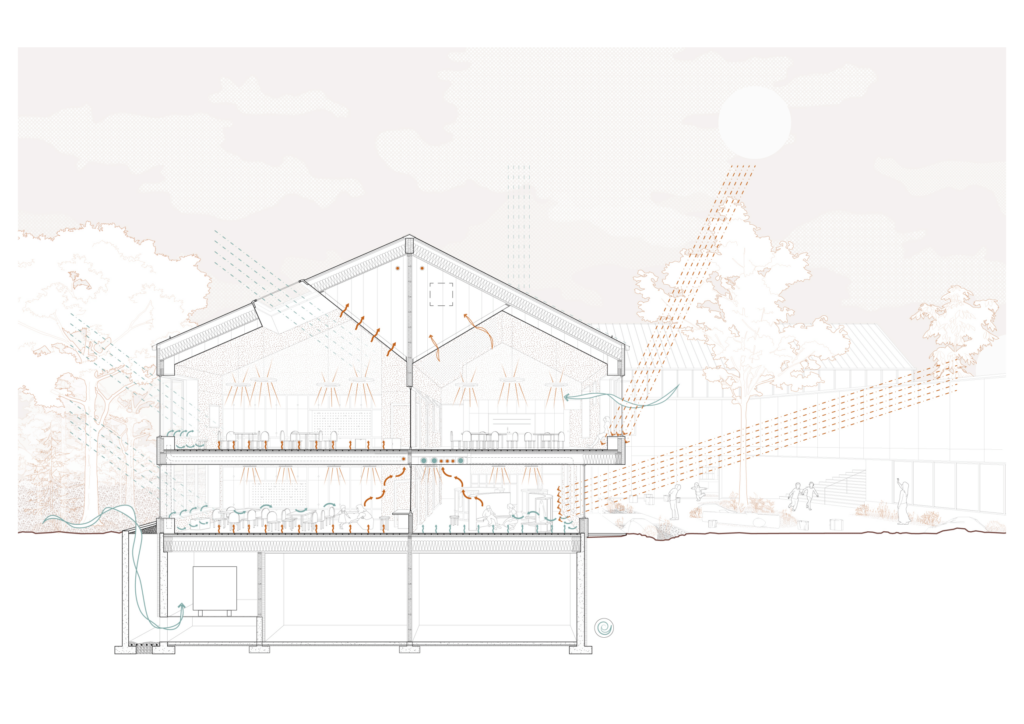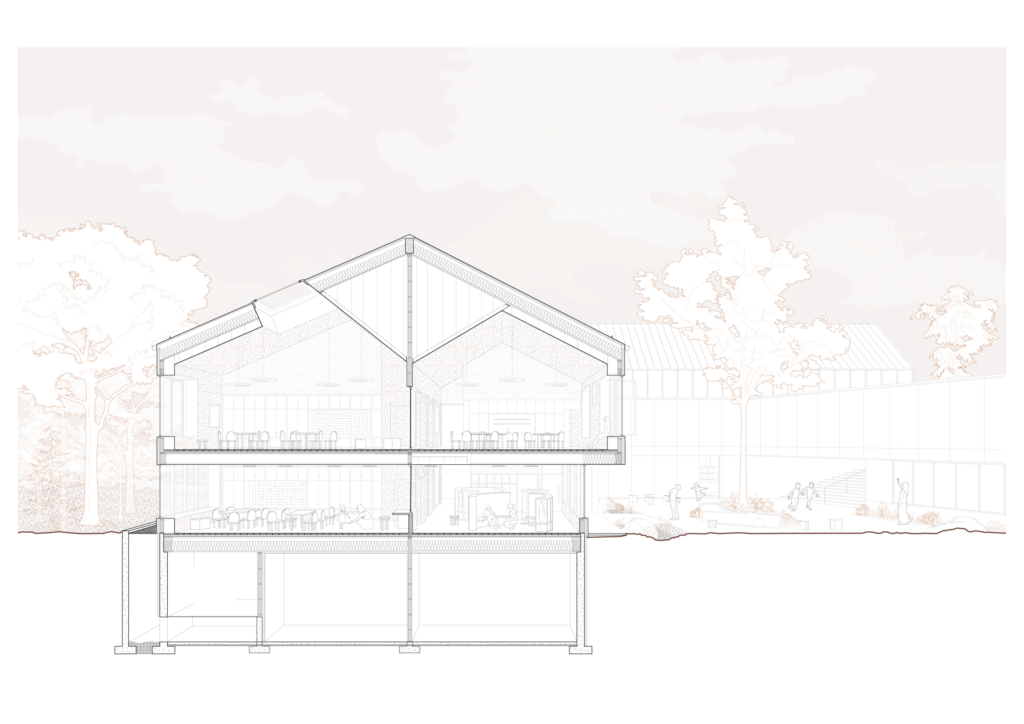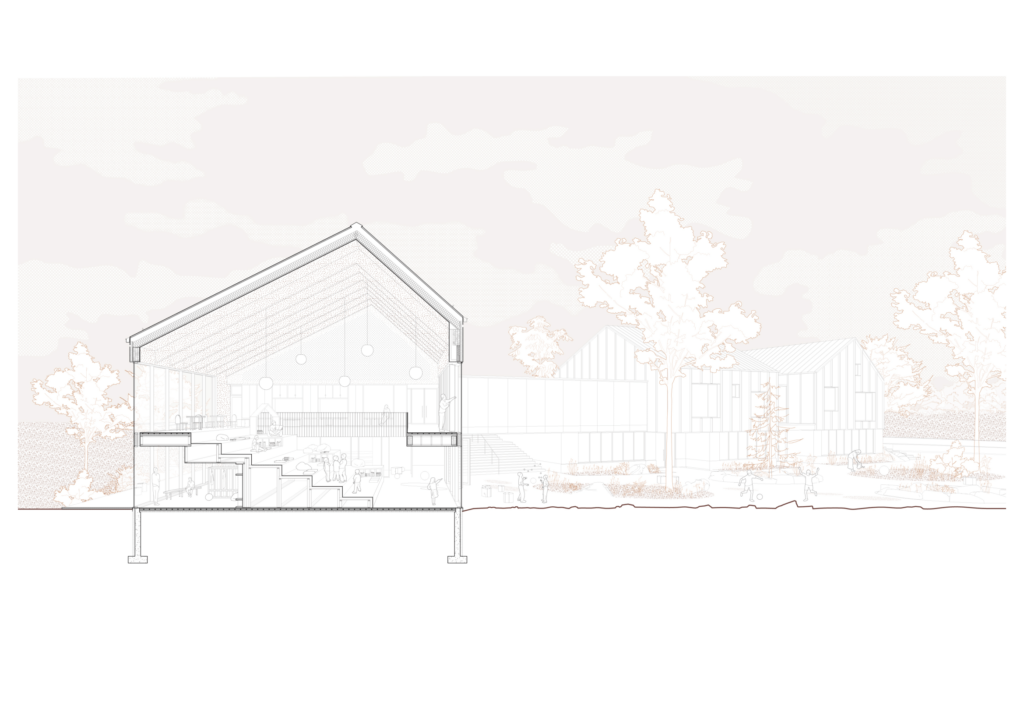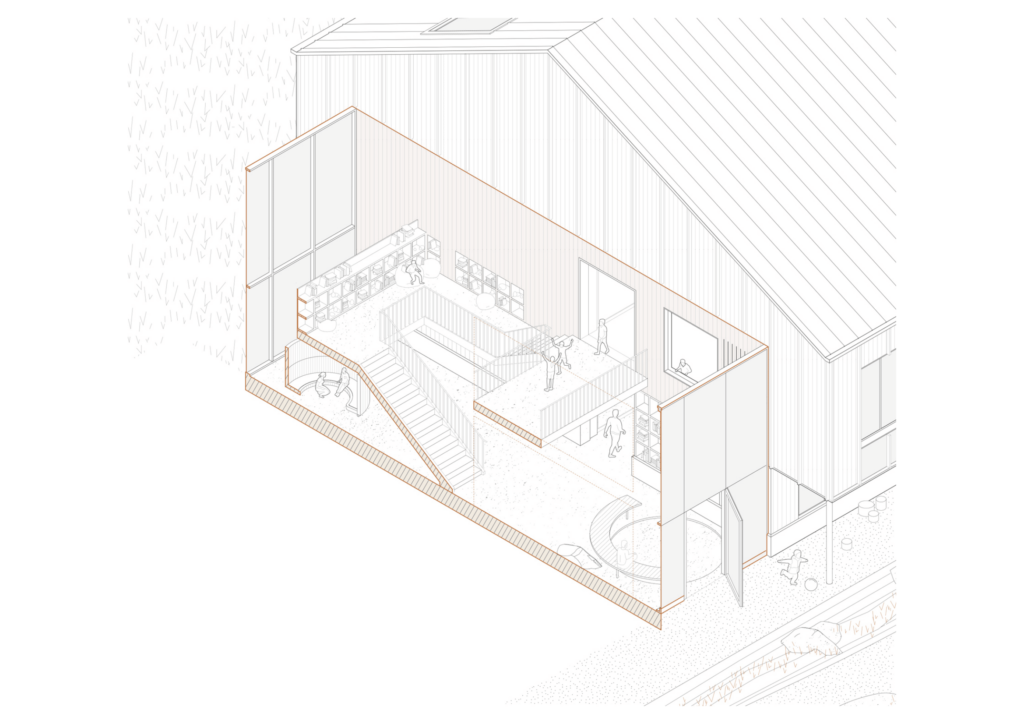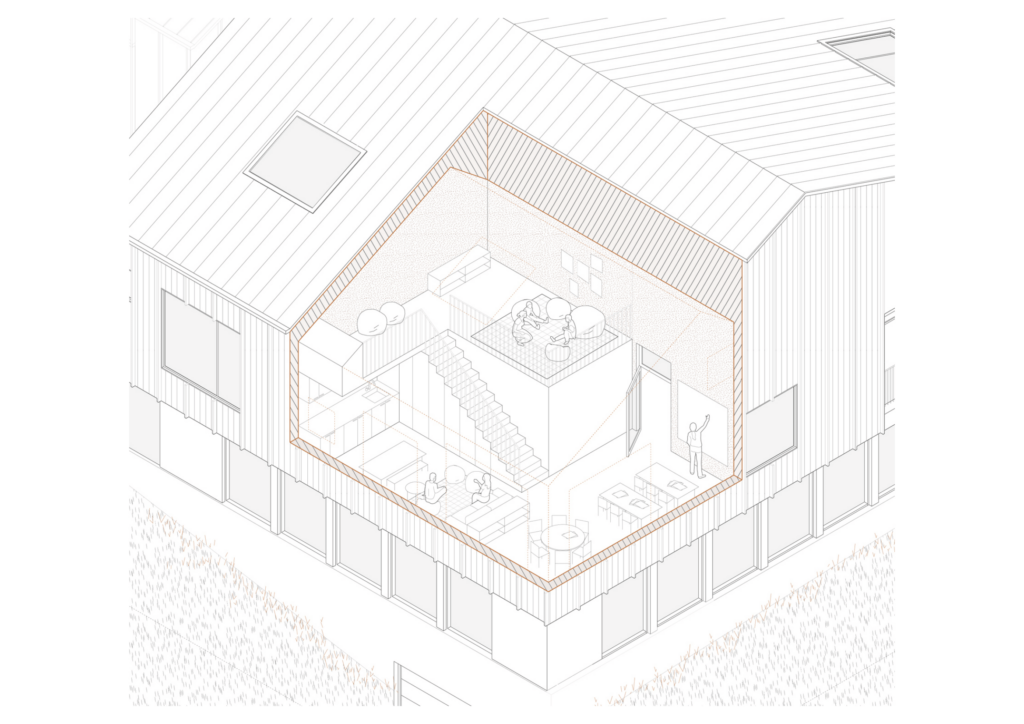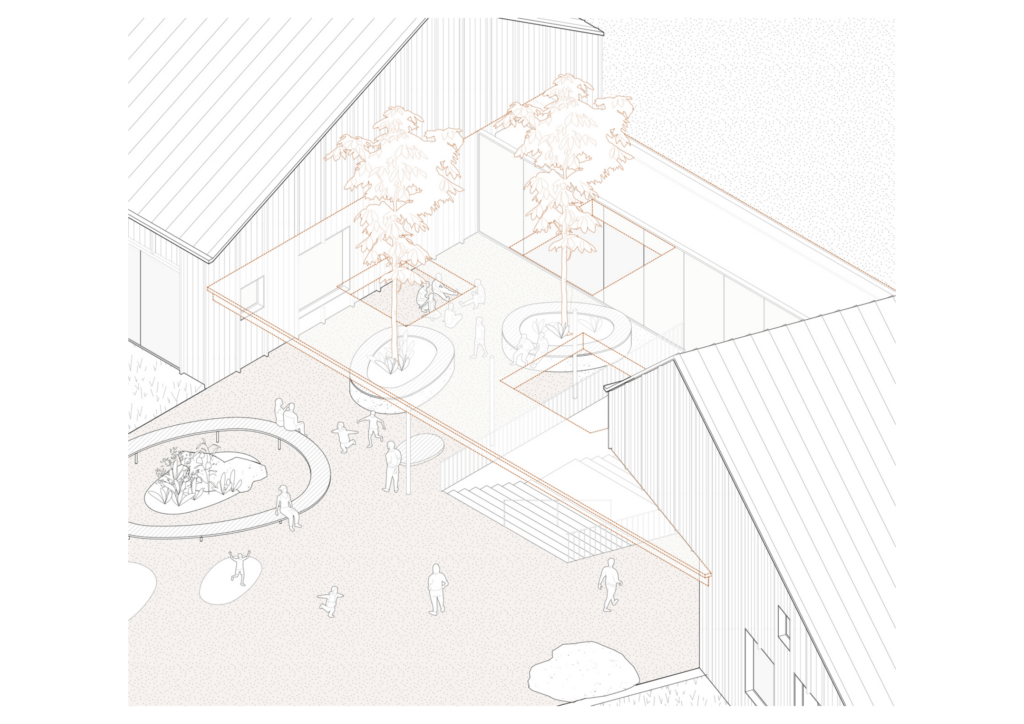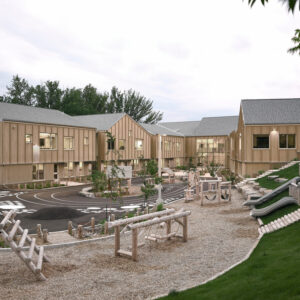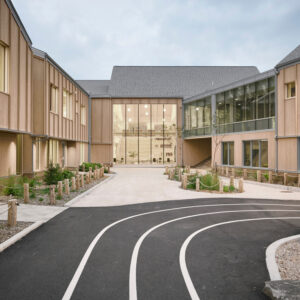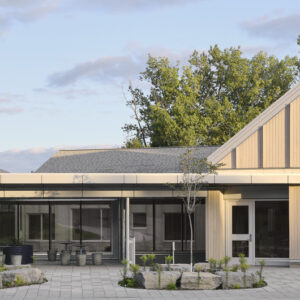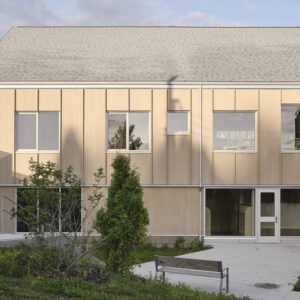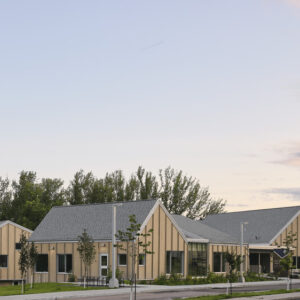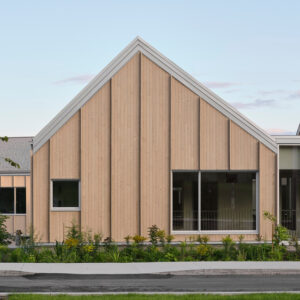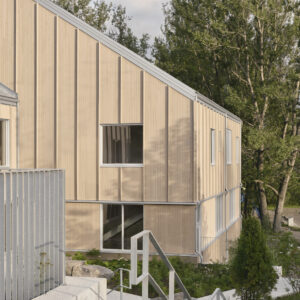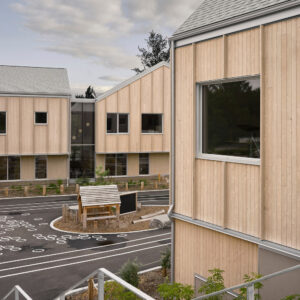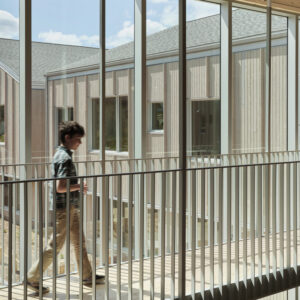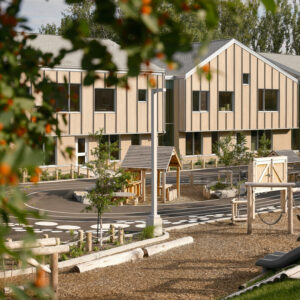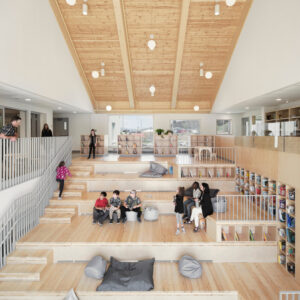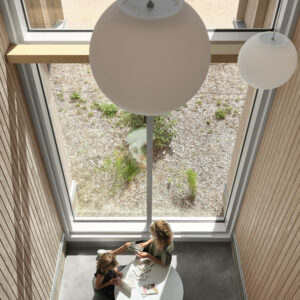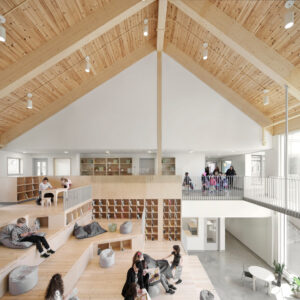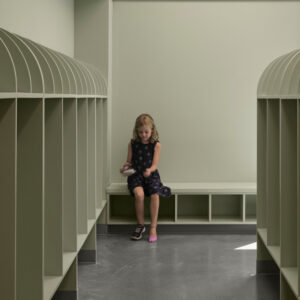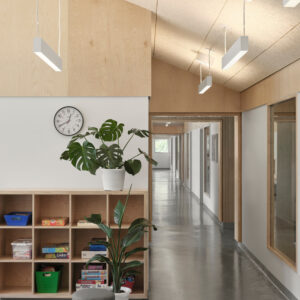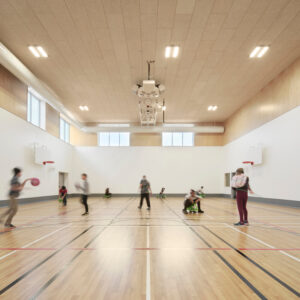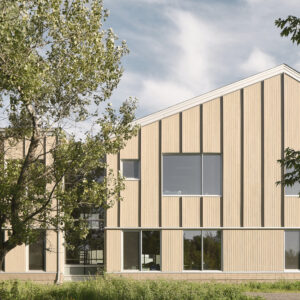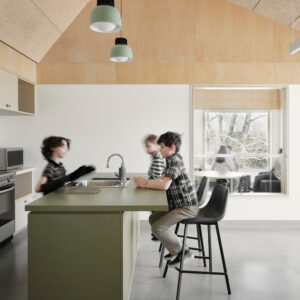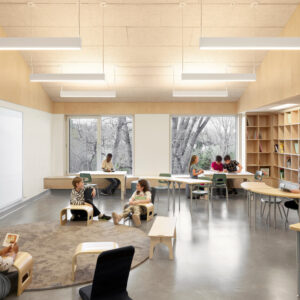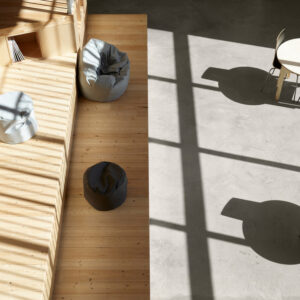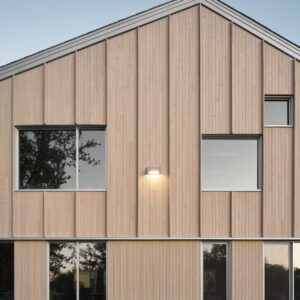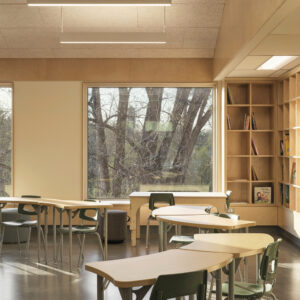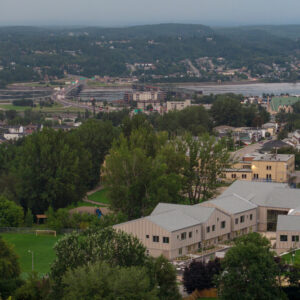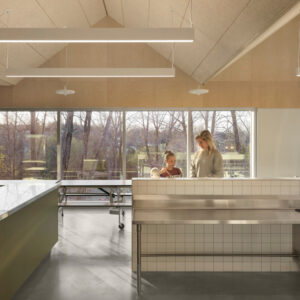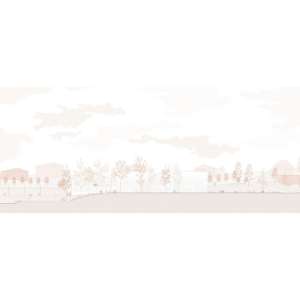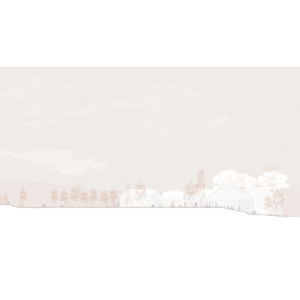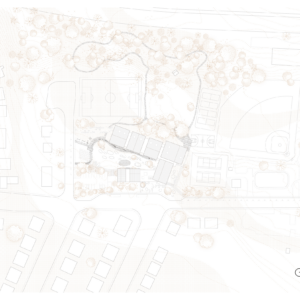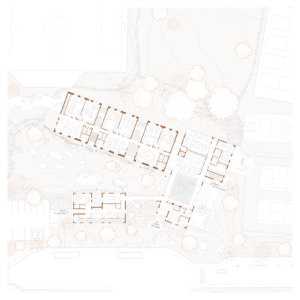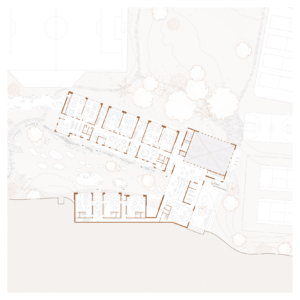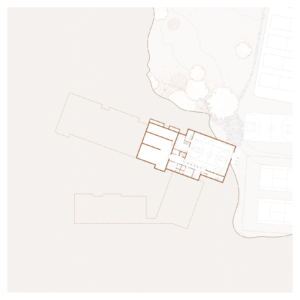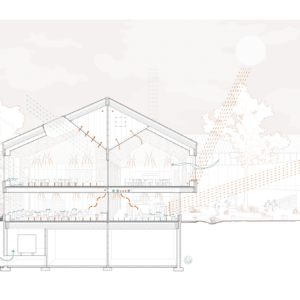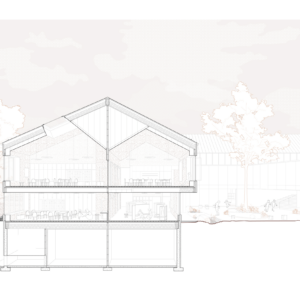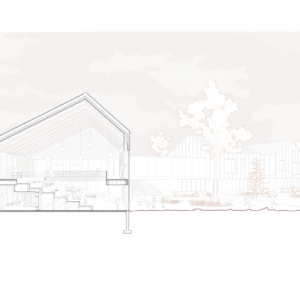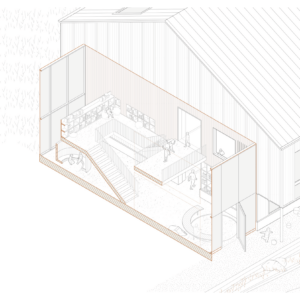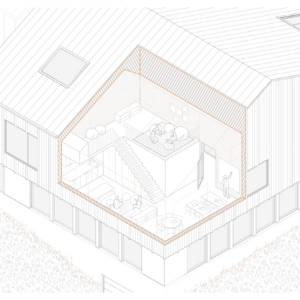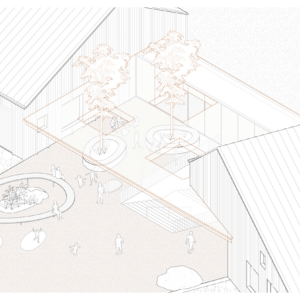- 24 January 2024
- 714 defa okundu.
L’École de l’Étincelle
At the heart of Joachim Park, in the Chicoutimi district of Saguenay, the consortium of Agence Spatiale, Appareil Architecture, and BGLA architecture present École de l’Étincelle, a shining example of architecture firmly rooted in its context.
The architectural approach aims to deconstruct the conventional school, which is a traditionally institutional building, and transform it into a friendly, accessible, and welcoming environment for children; to build structures at their scale, to break down the complex school into readable spaces with various reference points. The characteristic educational approach of the school influenced the project, creating a reassuring and familiar architecture. The school’s primary mission is to create a calming and reassuring atmosphere that will encourage students to love school and to feel comfortable, like they’re at home.
“A spark is the light that can give birth to great fires, great changes, and great dreams. From a simple spark, anything can happen,” explains Mélanie Girard, the director of l’Étincelle. “Our spark has allowed us to create an environment in which students can develop into the best version of themselves.”
École de l’Étincelle reflects the typical Saguenay way of life: a culture with strong ties to the natural environment. To reflect this, the architects relied heavily on local resources. The school is made entirely of wood, from its architectural frame to its interior design. The building is resolutely eco-responsible and grounded in its community.
Three distinct wings to delineate distinct functions
Inside the school, three distinct wings delineate its different functions. The street-facing wing includes staff rooms on the ground floor and preschool classrooms on the level below. This location ensures the children’s safety by connecting them with the courtyard.
The central wing transforms the traditional library into a community learning hub. This wing was developed to accommodate expanded opening hours, allowing the space to be accessible for the whole community. In the middle, a series of bleachers serve as a space for gathering and collaboration. This acts as a landmark for children, offering visible connections to all communal spaces. To one side of the library is the Creative Lab; a multi-purpose space with all the latest digital technologies. Its direct relationship with the tiered library allows children to seamlessly utilize the resources in both spaces. These common spaces overlook the courtyard, creating a welcomed distinction between the buzz of activity and the calm necessary for learning. This series of common spaces ends with a Culinary Lab, fully equipped with a restaurant-scale kitchen. The space is visually connected to both the Creative Lab and the treetops in the park behind the school. The harvest from the garden is brought there to be cooked and shared with other students and the community. The Culinary Lab supports the vision of Lab-École and the Rives-du-Saguenay School Service Center, which aims to integrate nutrition into the school’s DNA, creating a conducive environment for nutritional experiences, promoting well-being, engaged learning, and educational success.
The left wing is for the classrooms. Three sloped roof cottages create small, home-like schools within the building. Each grade is sequestered within its own learning community. Their orientation within the landscape ensures all classrooms benefit from natural, northern sunlight. To create more landmarks for the students to orient themselves, each grade is assigned a different colour, seen on key parts of the classroom’s architecture. Collaborative spaces in the middle of each classroom mimic public squares and encourage mutual support. This teaches students to work as a team, while diversifying the traditional learning models.
Sun-drenched interstices connect the spaces between each cottage. These in-between spaces provide visual openings to the courtyard as another landmark for students to orient themselves. These pathways become new places for socializing, encourage curiosity, and push the student to develop their autonomy. Benefiting from the addition of bookcases, which allow the library to reach throughout the school, and comfortable seating, these interstices create a welcoming atmosphere for students to pause throughout their day.
The Chalet
As a distinctive element of the educational program, the chalet is a dedicated space for accommodating young individuals with special needs and promoting socio-affective development. Similar to a home, it features a small living room, a kitchen with an island, and a dining area. It’s a place for meaningful conversations, building trust, working on social skills, and fostering growth. The physical environment provides children with the security and well-being needed for healthy development in a warm and stimulating living environment. It feels like home, a place where one can truly feel comfortable.
A Microclimate for an Active Life
The landscaping extends the learning space beyond the walls of the school. Designed with consideration for Saguenay’s northern climate, the courtyard is tucked within the U-structure of the school, creating a secure inner courtyard for recreational and educational activities. Here, you will find a sports circuit promoting physical activity, a sheltered area to enjoy the outdoors, no matter the weather, an outdoor classroom, a garden, as well as individual and collective play spaces. The layout is designed to create a subdued microclimate, protecting the space from dominant winds and extreme weather fluctuations. The courtyard offers children a multitude of diverse, playful, and creative experiences.
The landscape architects designed a courtyard that encourages free exploration, stimulating the imagination through play structures and various oval-shaped ground markings. These organic shapes are designed at a child’s scale, creating enveloping subspaces reminiscent of cocoons.
The gardens are primarily composed of native species, providing natural resilience and harmonious adaptation to the environment. Bioretention basin areas facilitate rainwater management. Spaces are designated for annual vegetable planting, promoting education in urban agriculture. The topography, shaped by the addition of mounds and the natural terrain variations, is optimized with the presence of a natural amphitheater and spaces for climbing and sliding.
Exemplary Electromechanical Architecture for Efficient Energy use
The school is a brilliant example of efficient energy use. Its electromechanical systems were developed along four main criteria: sustainability, comfort, operational simplicity, and harmony with the architecture. The strong technical architecture allowed for smaller capacity systems that are more sustainable and have lower operating costs.
The entire building is temperature controlled through centralized air-source heat pumps. Combined with hot and cold hydronic radiant floors, this ensures comfort throughout all months of school occupancy. Fresh air flows through the school using a displacement ventilation model, allowing all diffusers to be integrated directly into the architecture.
All of these electromechanical elements are housed in the school’s machine room. Inaccessible to students, the space acts as a laboratory, exploring the simplification of building mechanics and the enhancement of comfort. The school aims for LEED V4 certification, which recognizes efforts in energy performance and reductions in the ecological footprint.
